Photographing FELM's Bilingual Education Programme in Ratanakiri
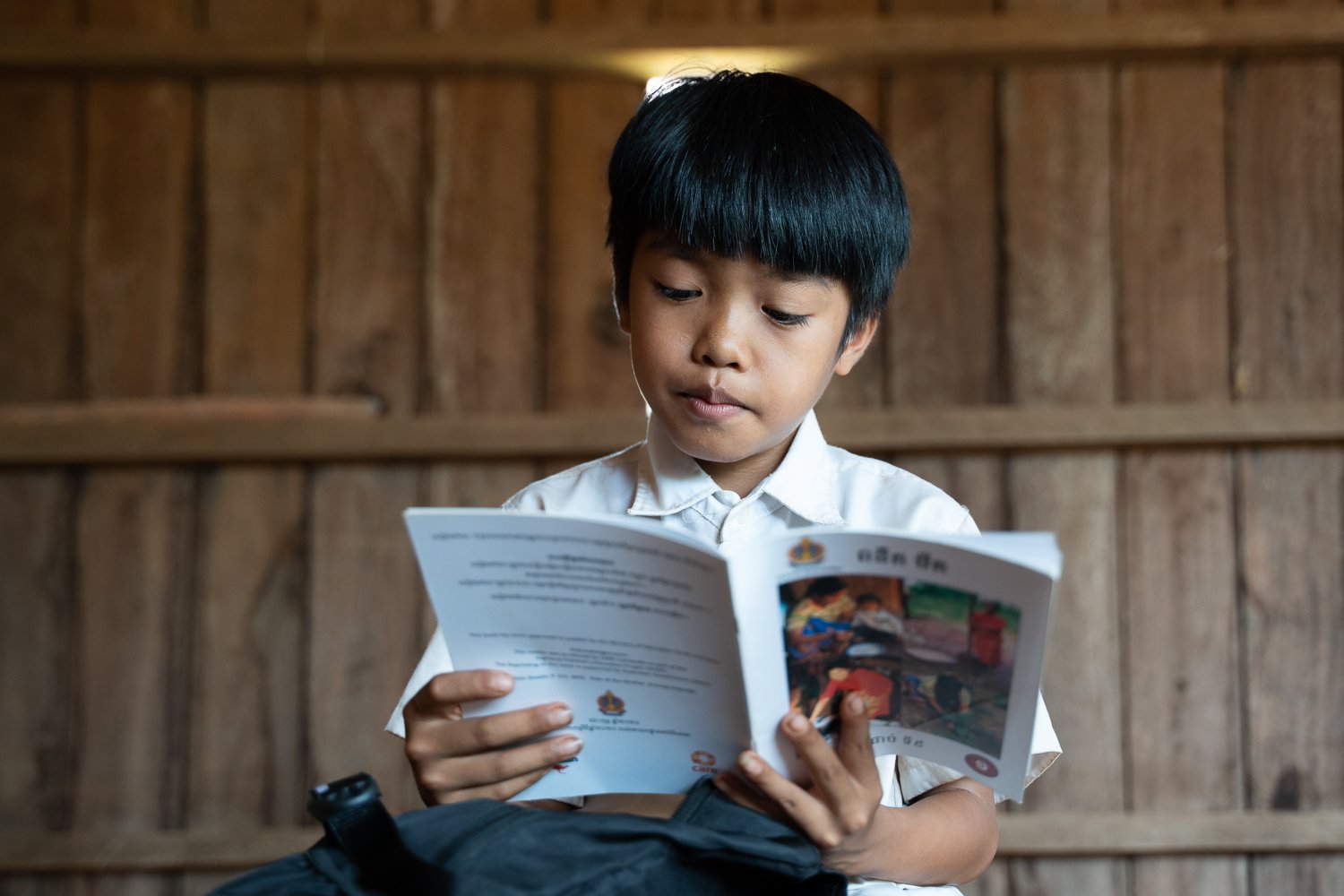
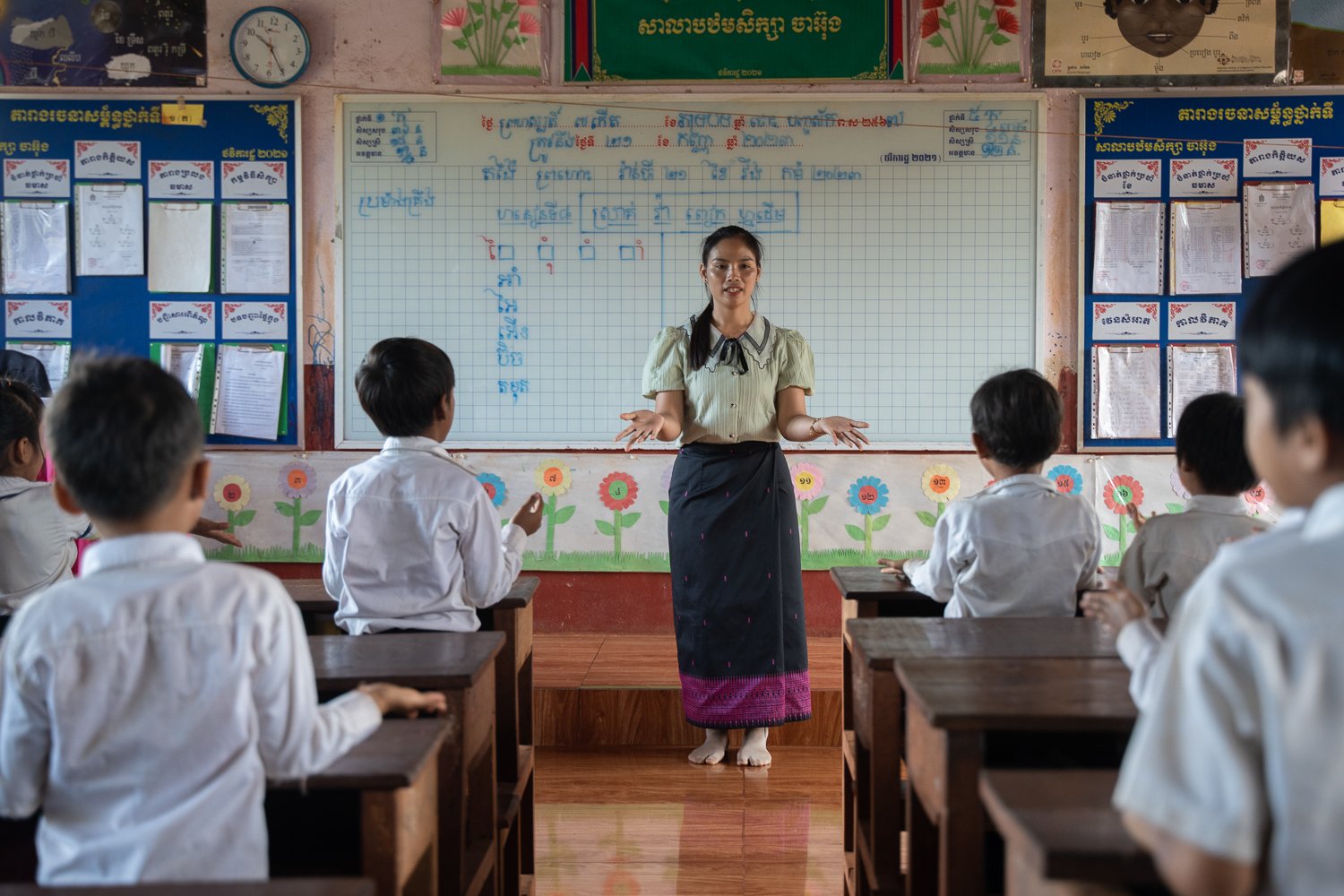

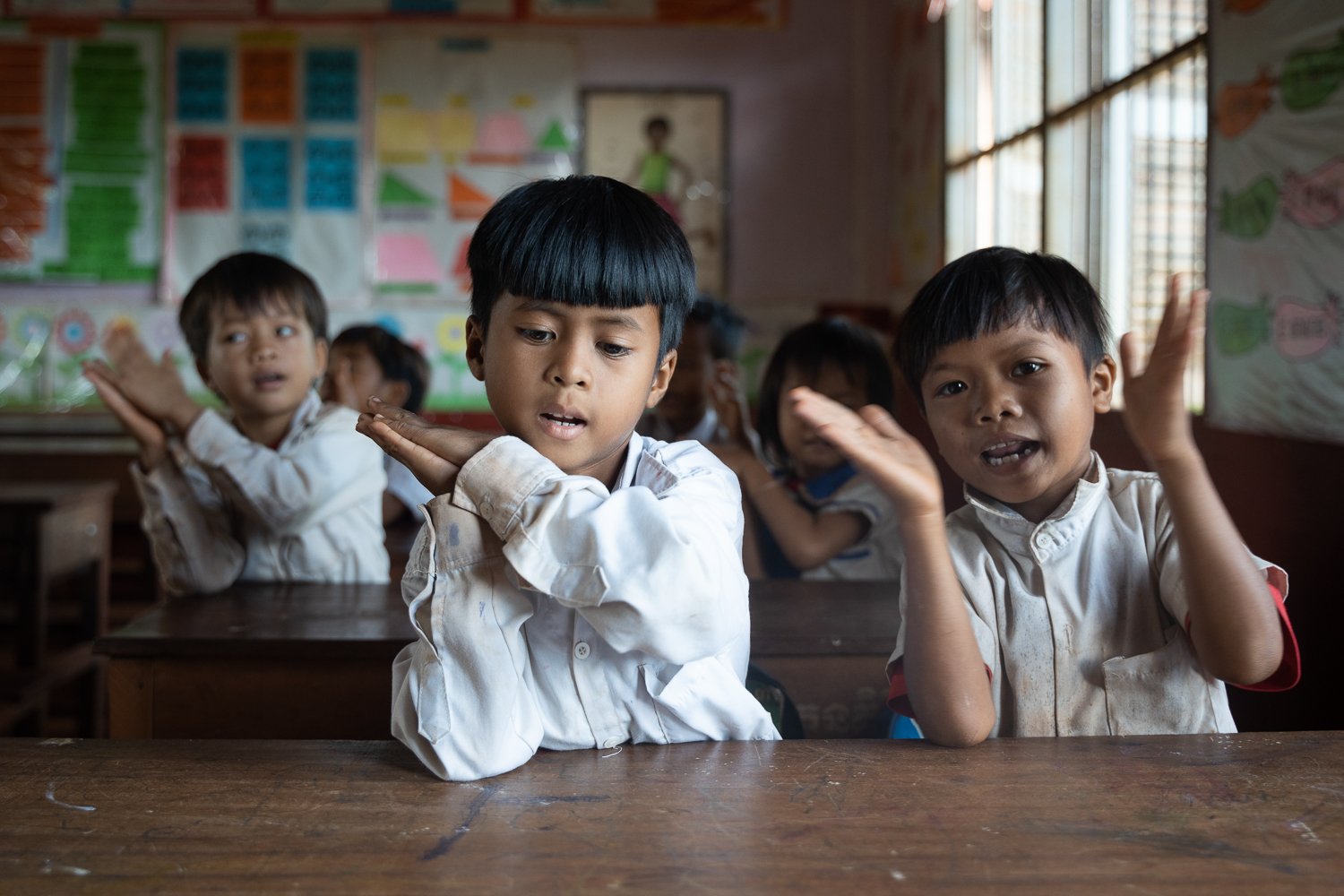
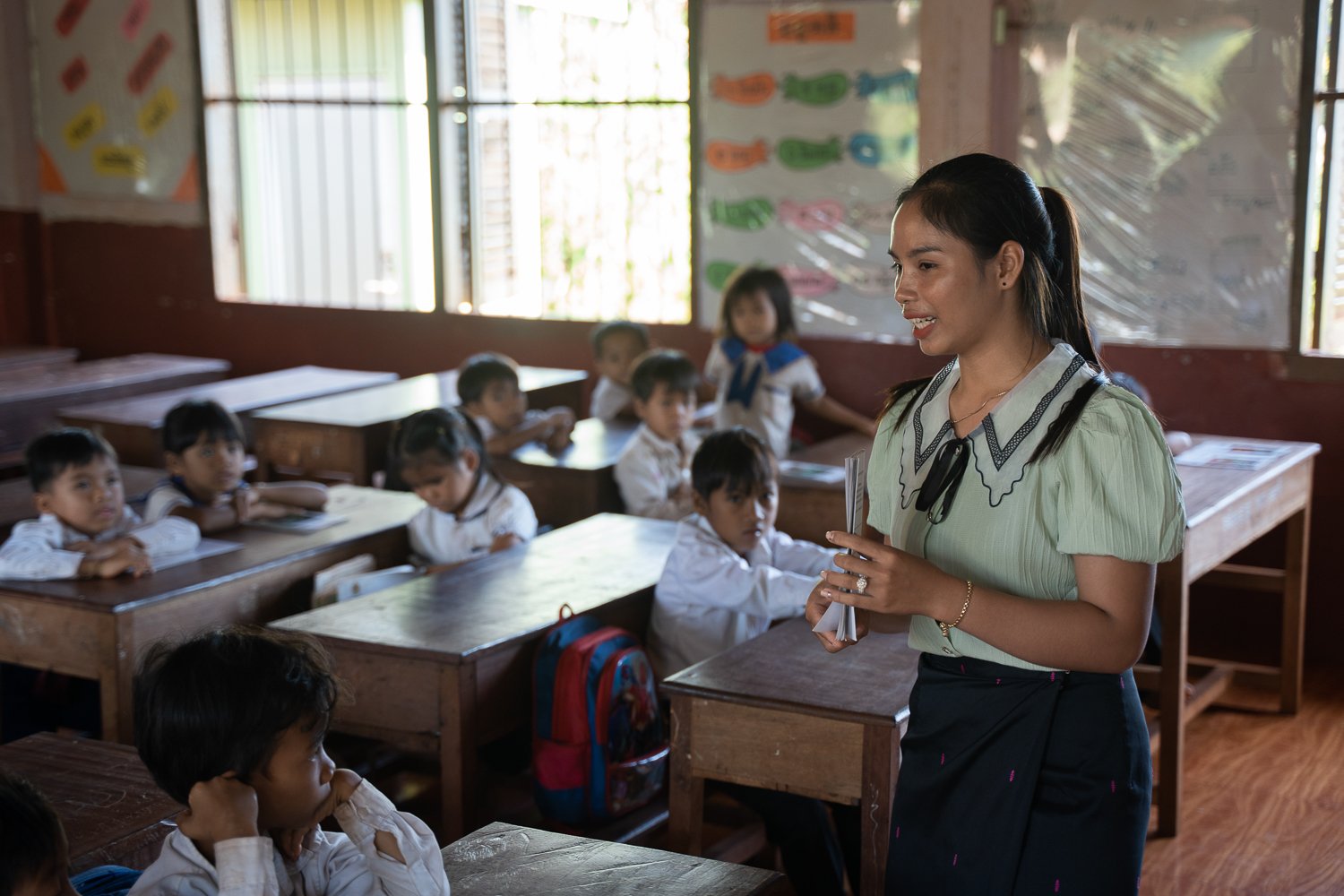
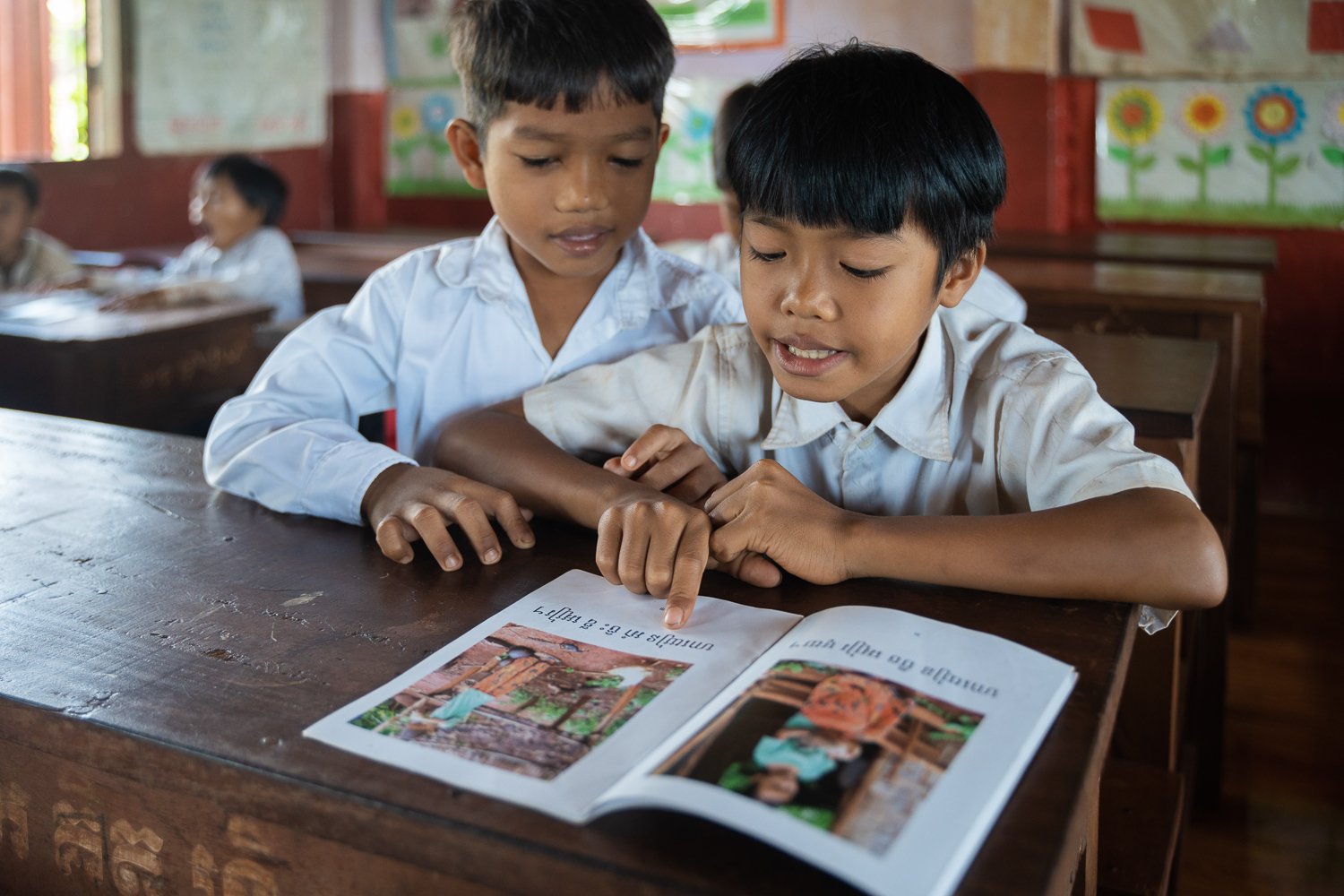
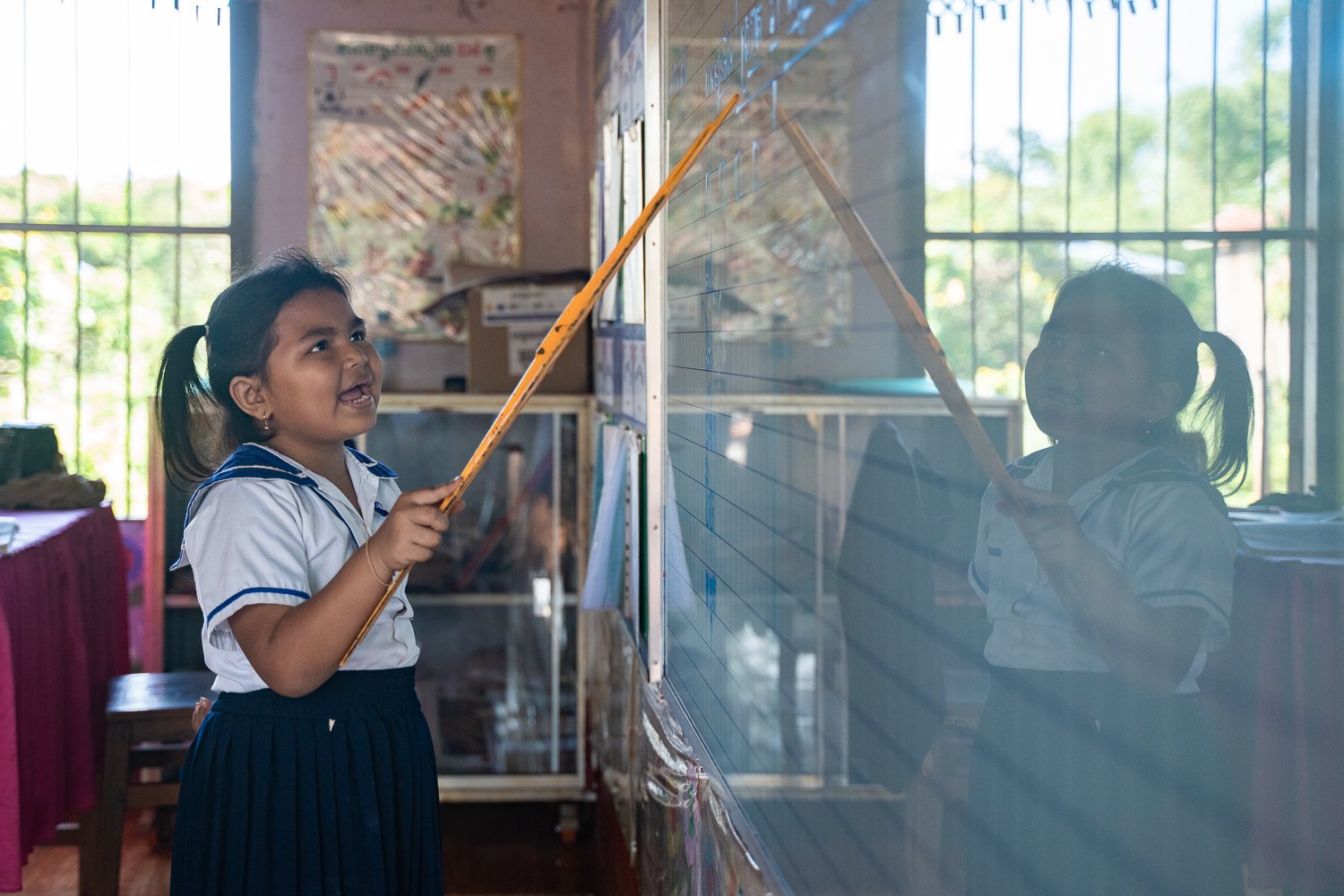
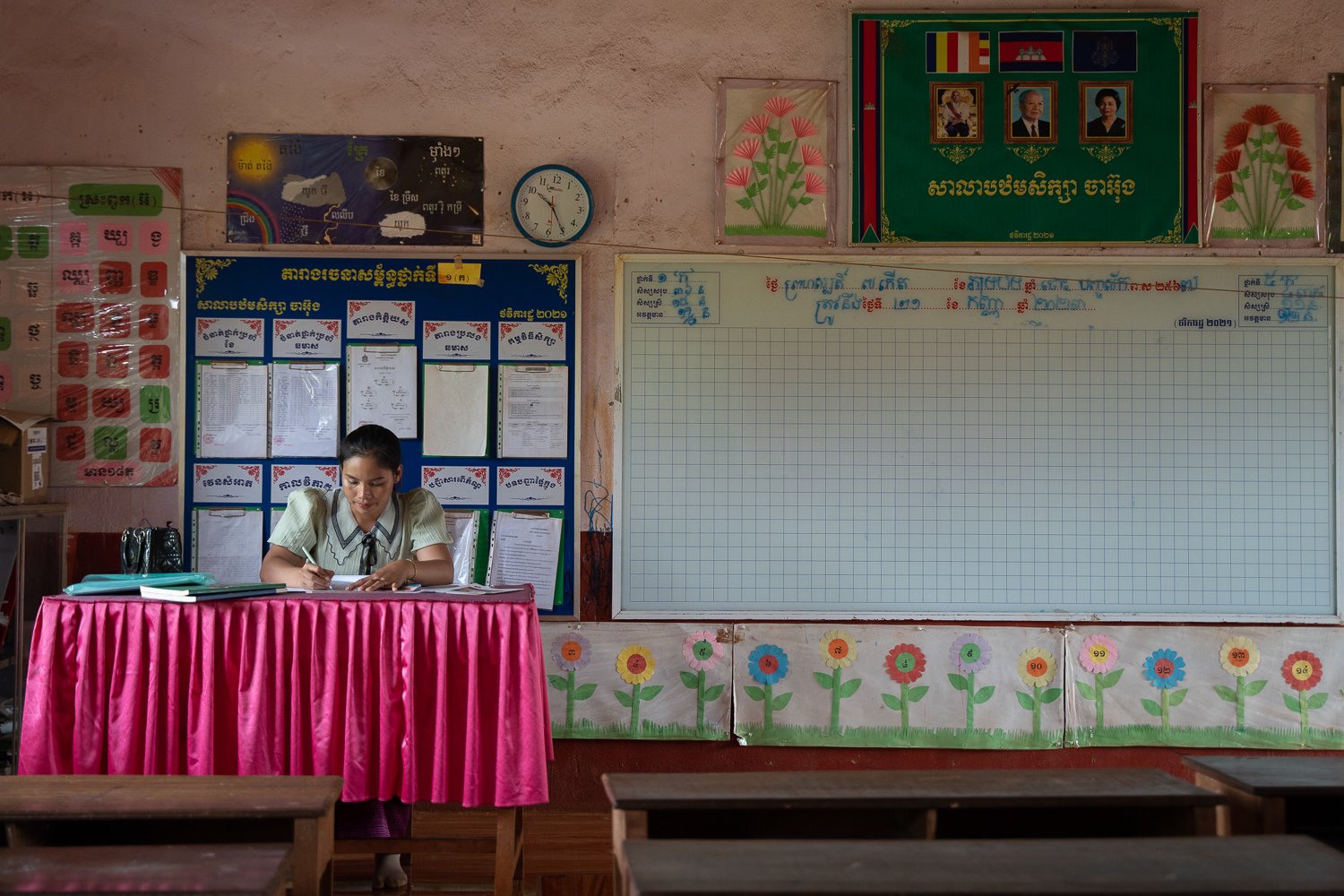
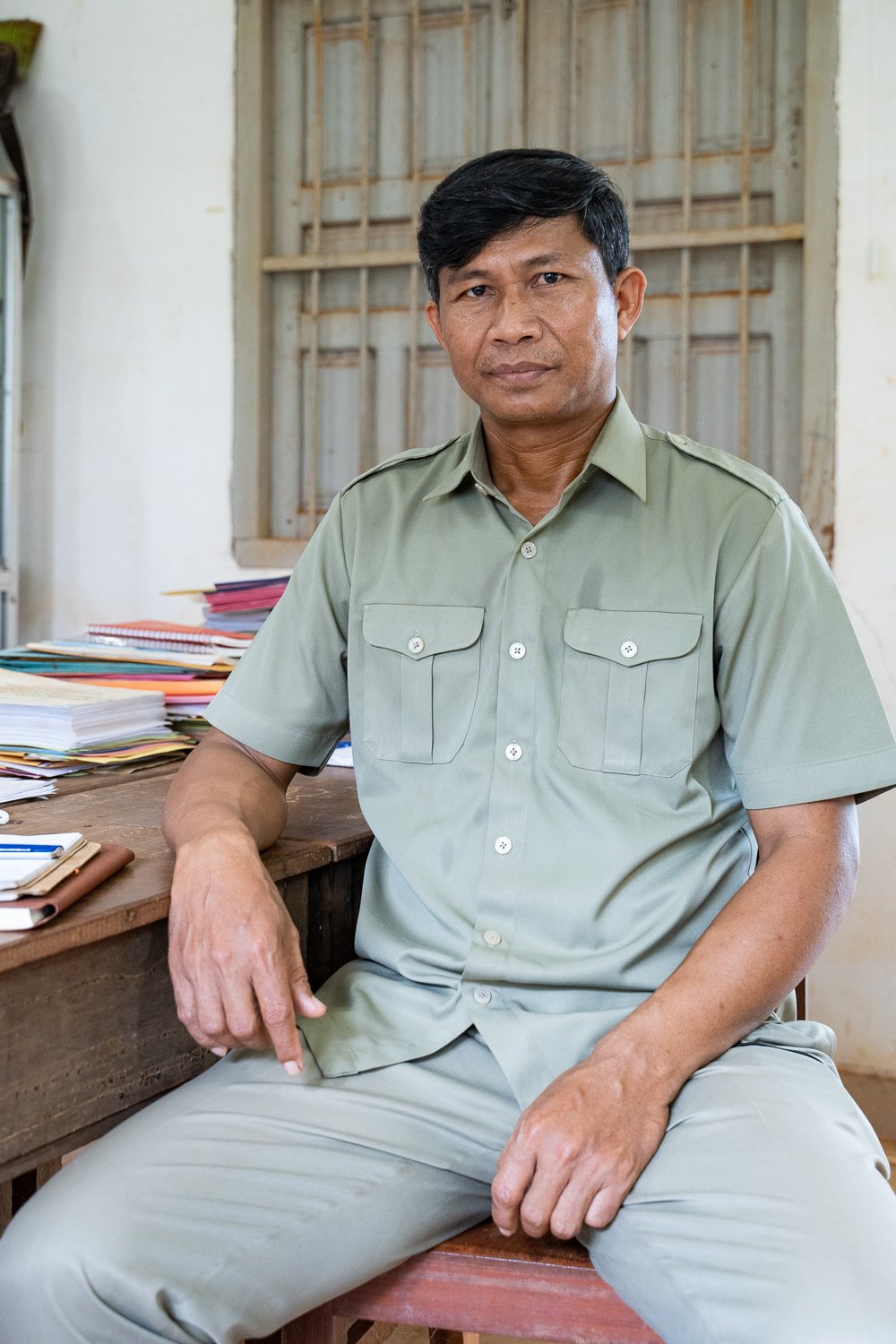

The first time I visited Ratankiri Province was when I was working with UWS as a videographer. The beauty of the Stoeng Ta Pok river left a lasting impression on me, so I was more than happy when FELM contacted me and asked me to work as a documentary photographer in the province for them.
The work for UWS was to show the schools they build in remote areas and the education projects they run, so I was on familiar ground when FELM, a Finnish NGO, asked me to photograph their bilingual education programme.
FELM have an interesting development model whereby they select and support local NGOs who run projects they believe in.
The partner for this project is International Cooperation Cambodia.
The programme is designed so that children entering school learn in the mother tongue for the first couple of years.
This increases attendance and children learn faster while transitioning to a Khmer education.
For the project we travelled to a small village just outside Banlung and took documentary photographs of a class in action.
The teacher and students were great, the classroom was vibrant and I’m really happy some of the photos I took.
After class, we travelled to one of the student’s houses to see how he carries on learning at home. He lives in a traditional wooden house. I’m really happy with the portraits as the natural light is great and the tone of the wood gives the images warmth.
As part of the assignment, I also photographed commune and provincial levels officials as their support is essential to the implementation of the project.
I enjoy working on education projects as the positive impact is often very apparent. You can see some work I did for World Food Programme here.
In the Field - NGO Photography for FELM's Mushroom Cultivation Initiative, Ratanikiri, Cambodia
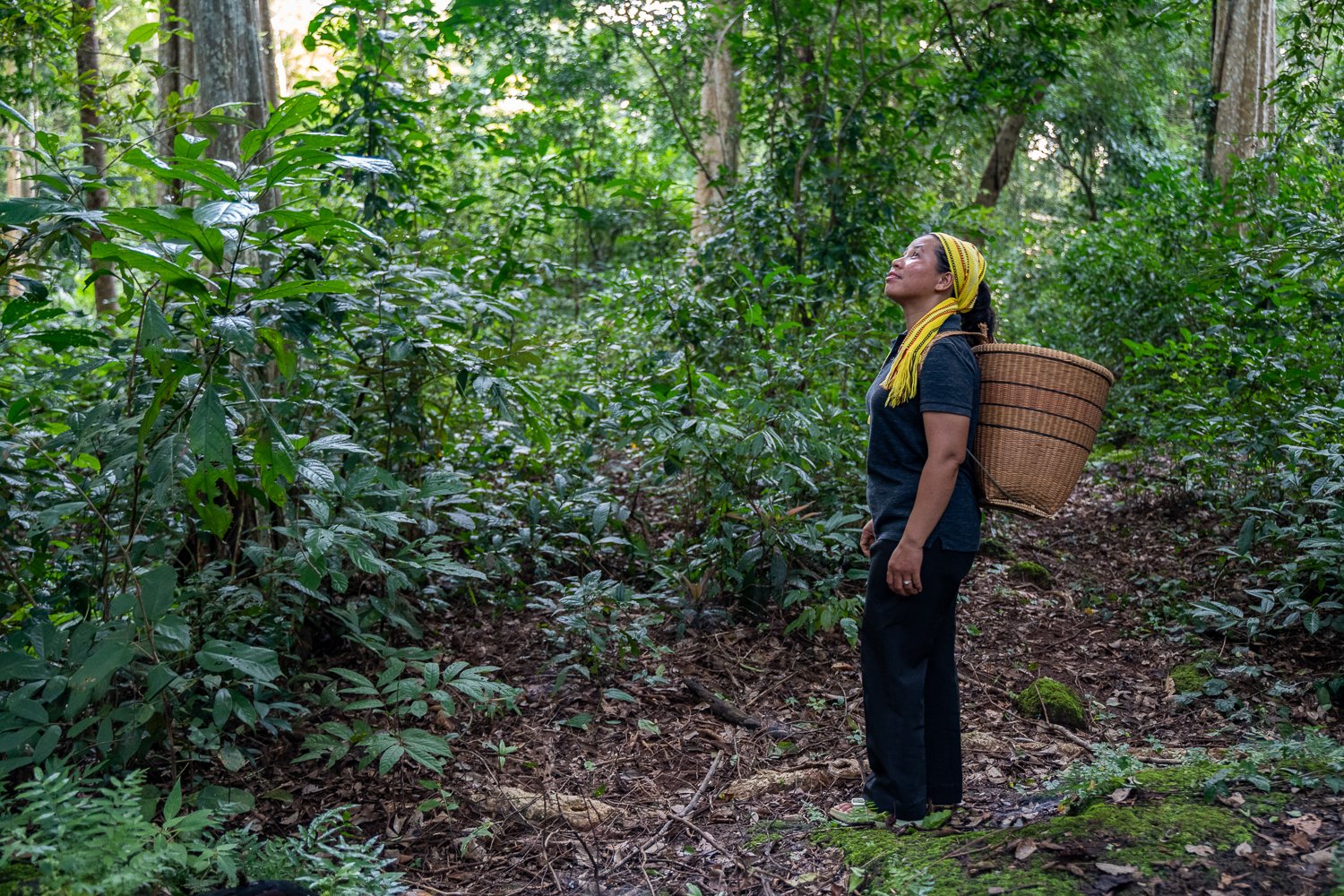
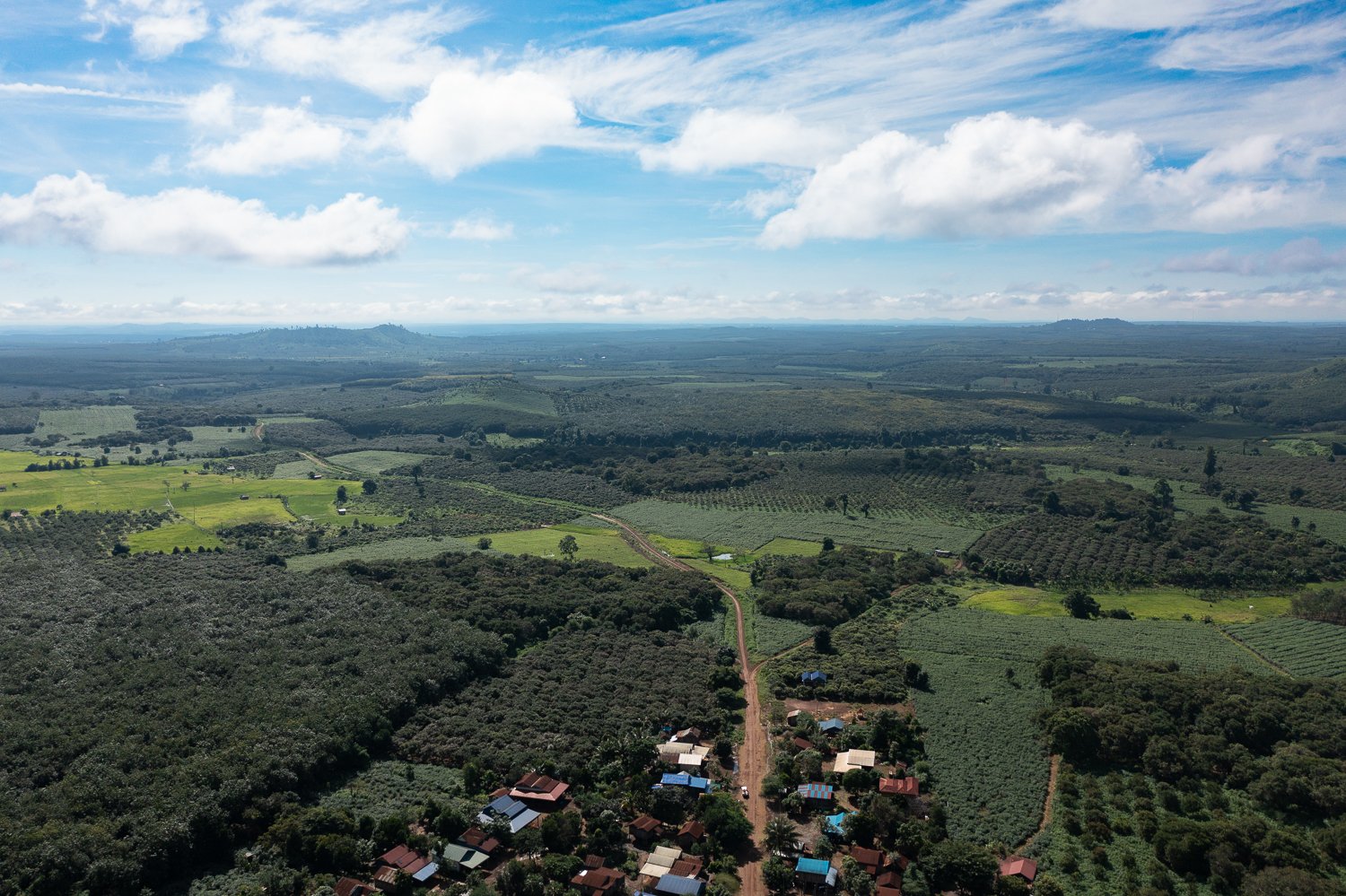
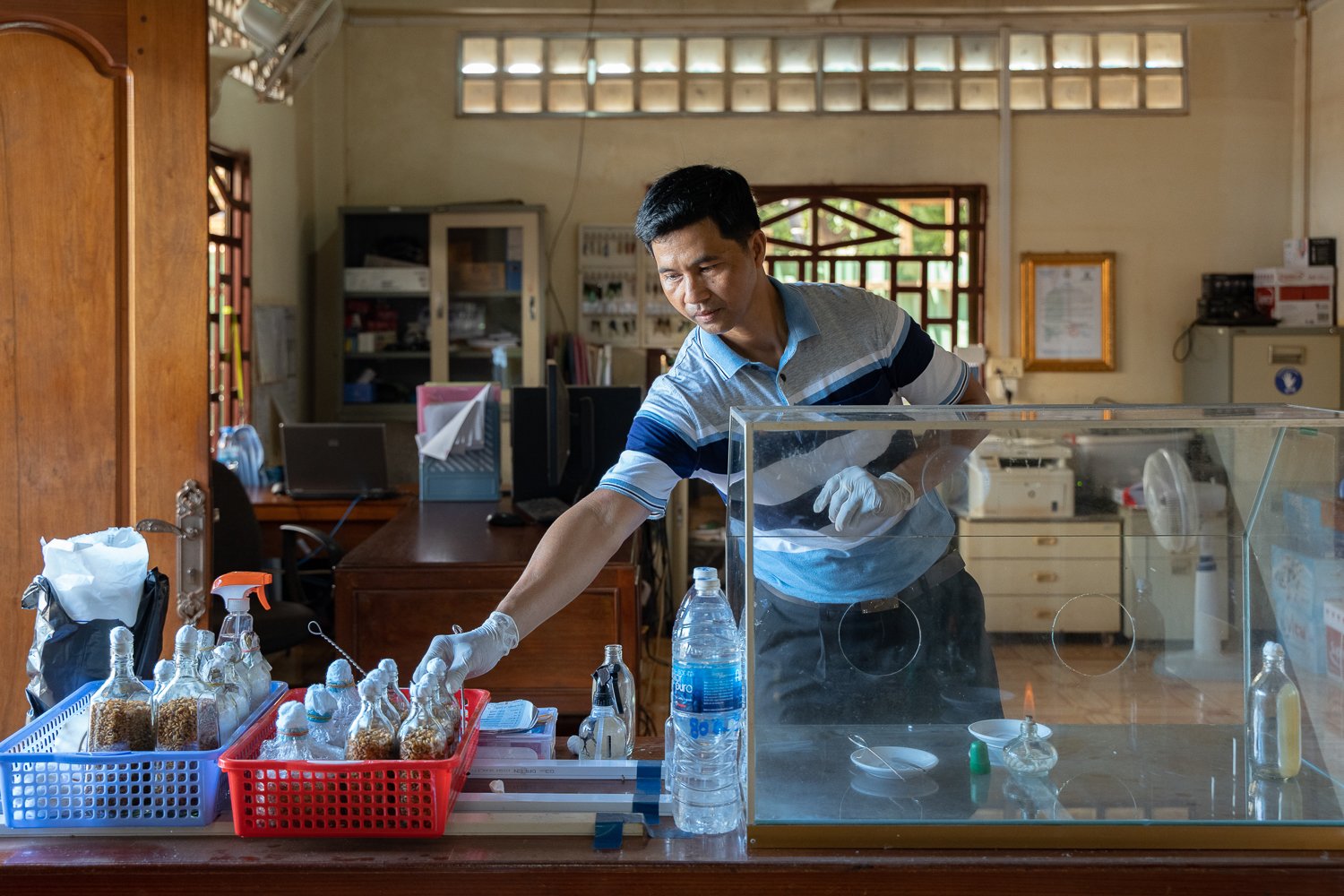
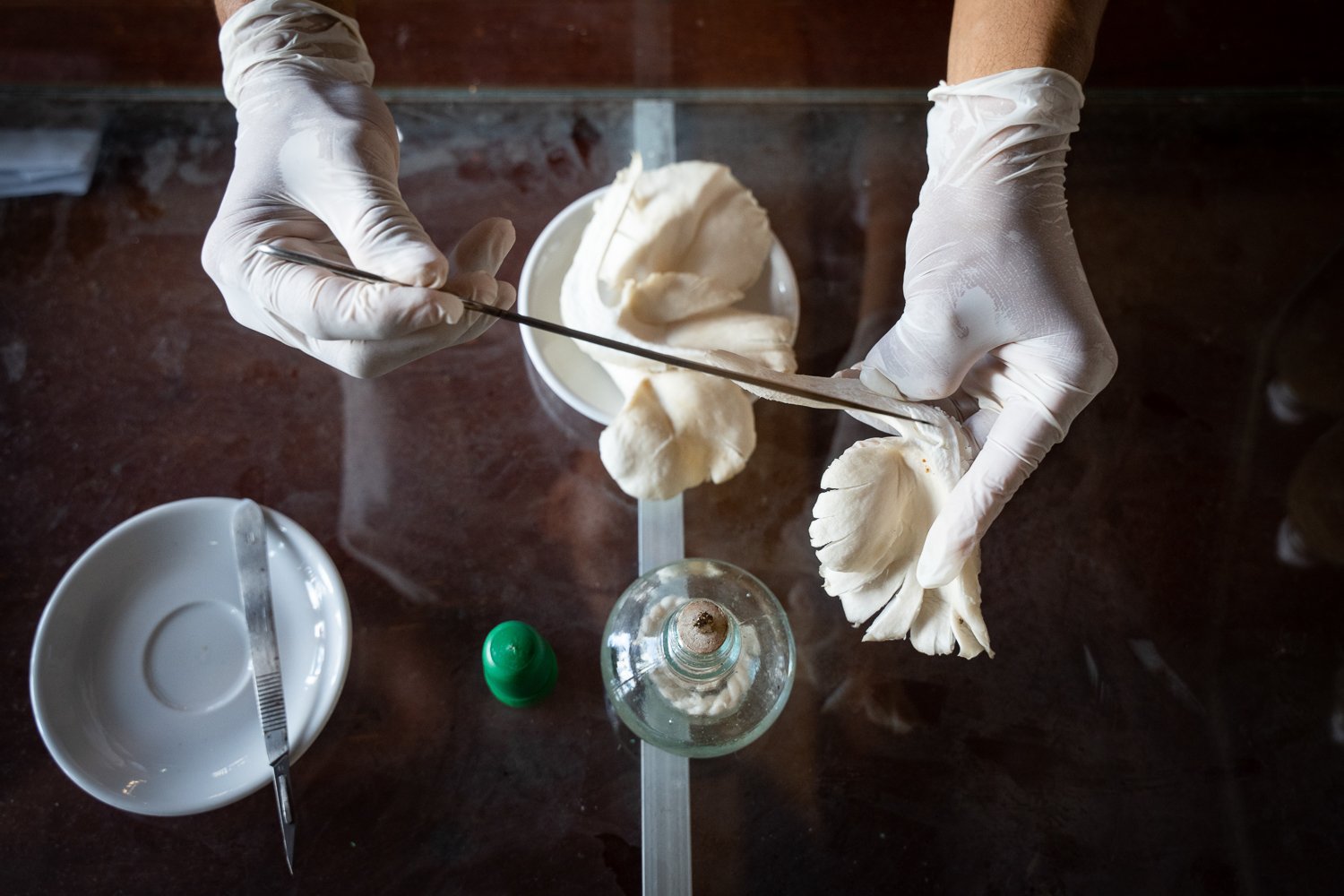
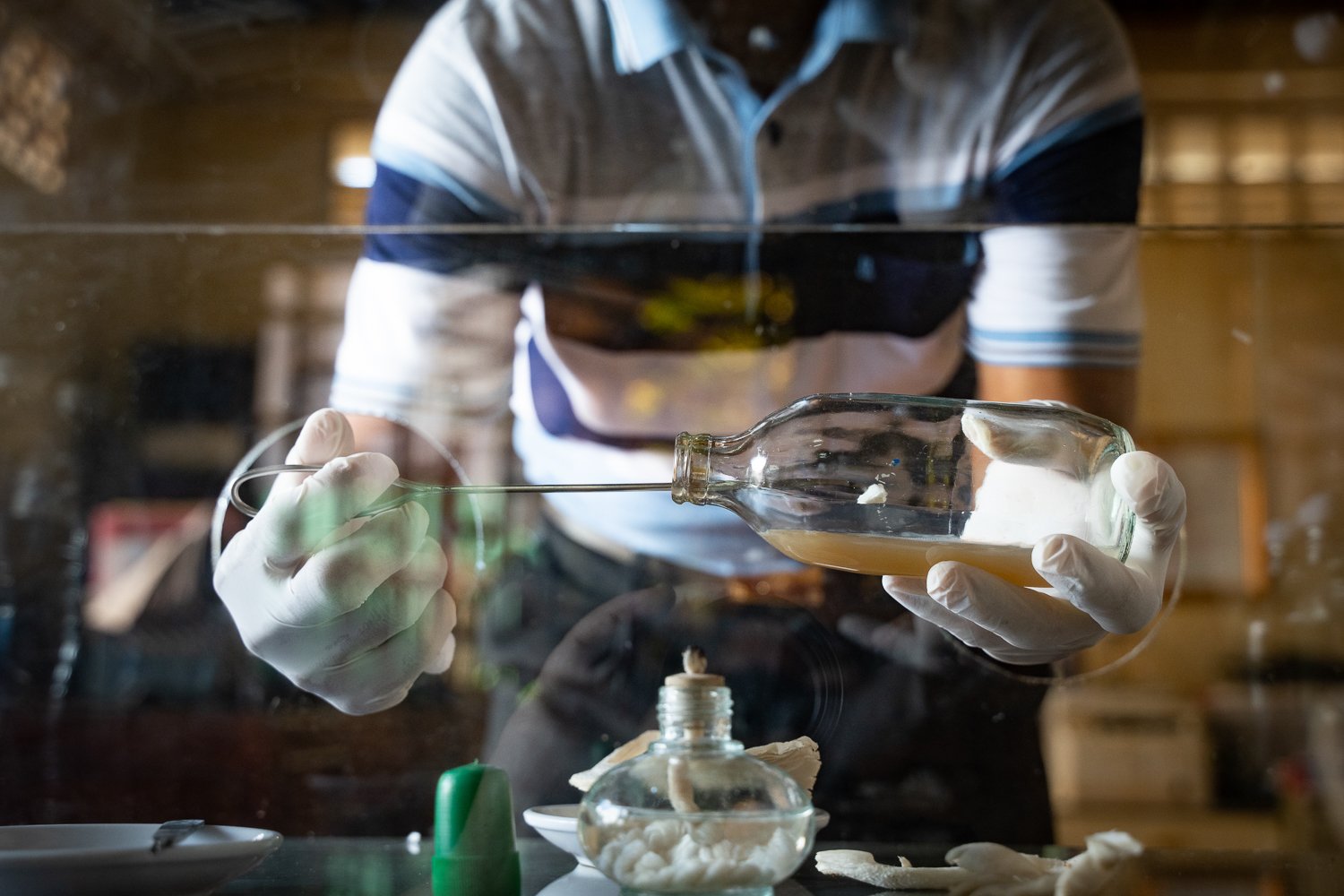

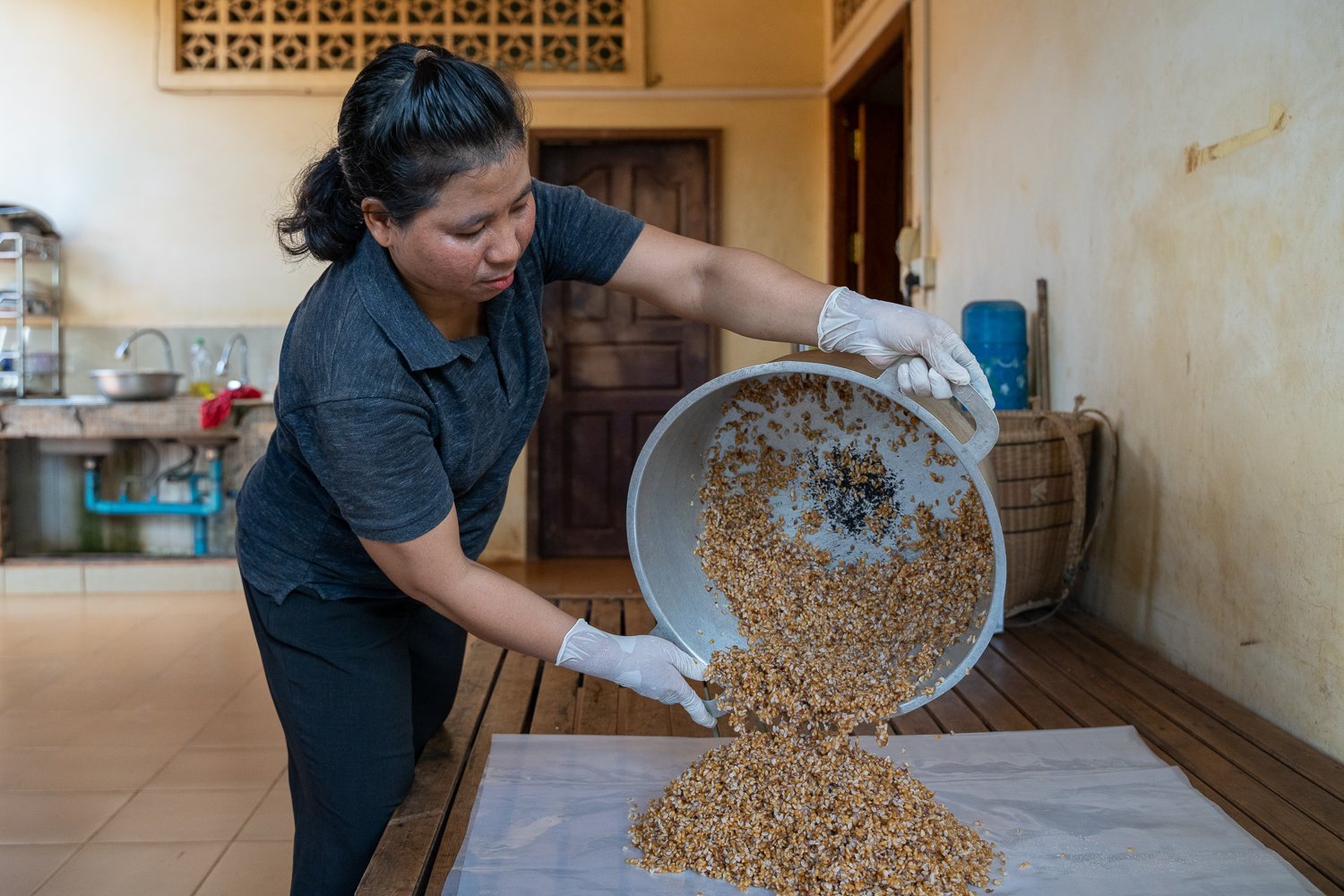
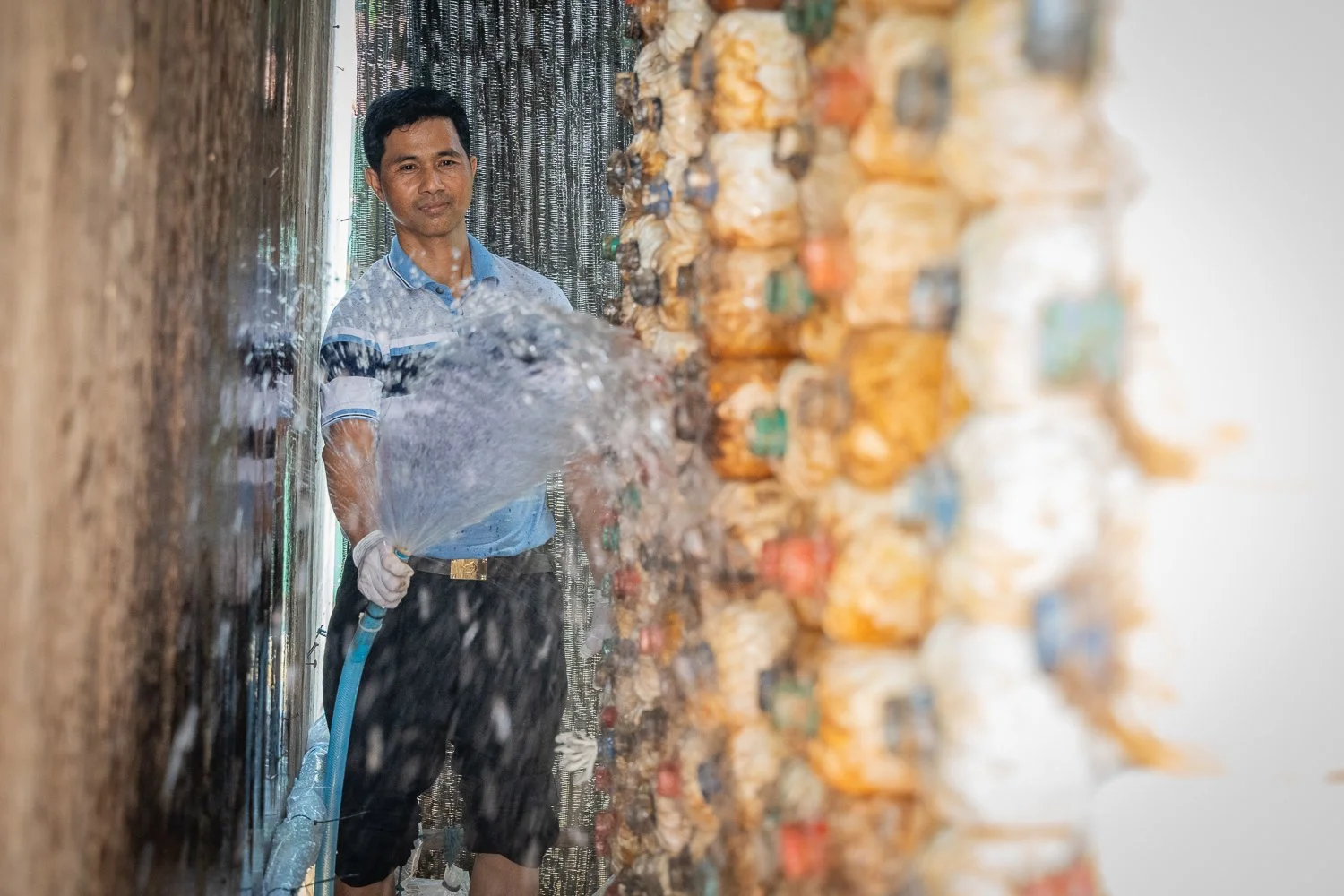
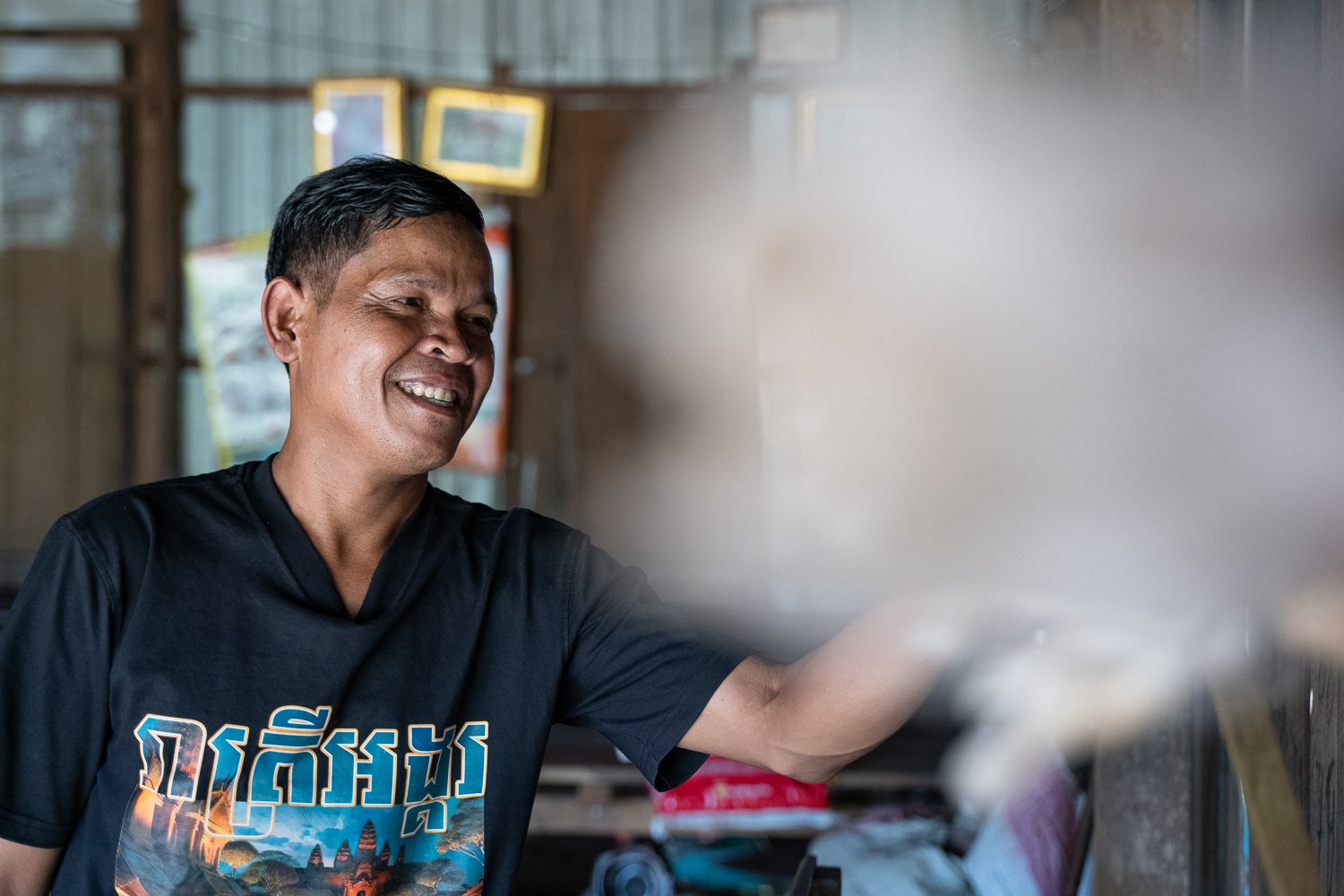
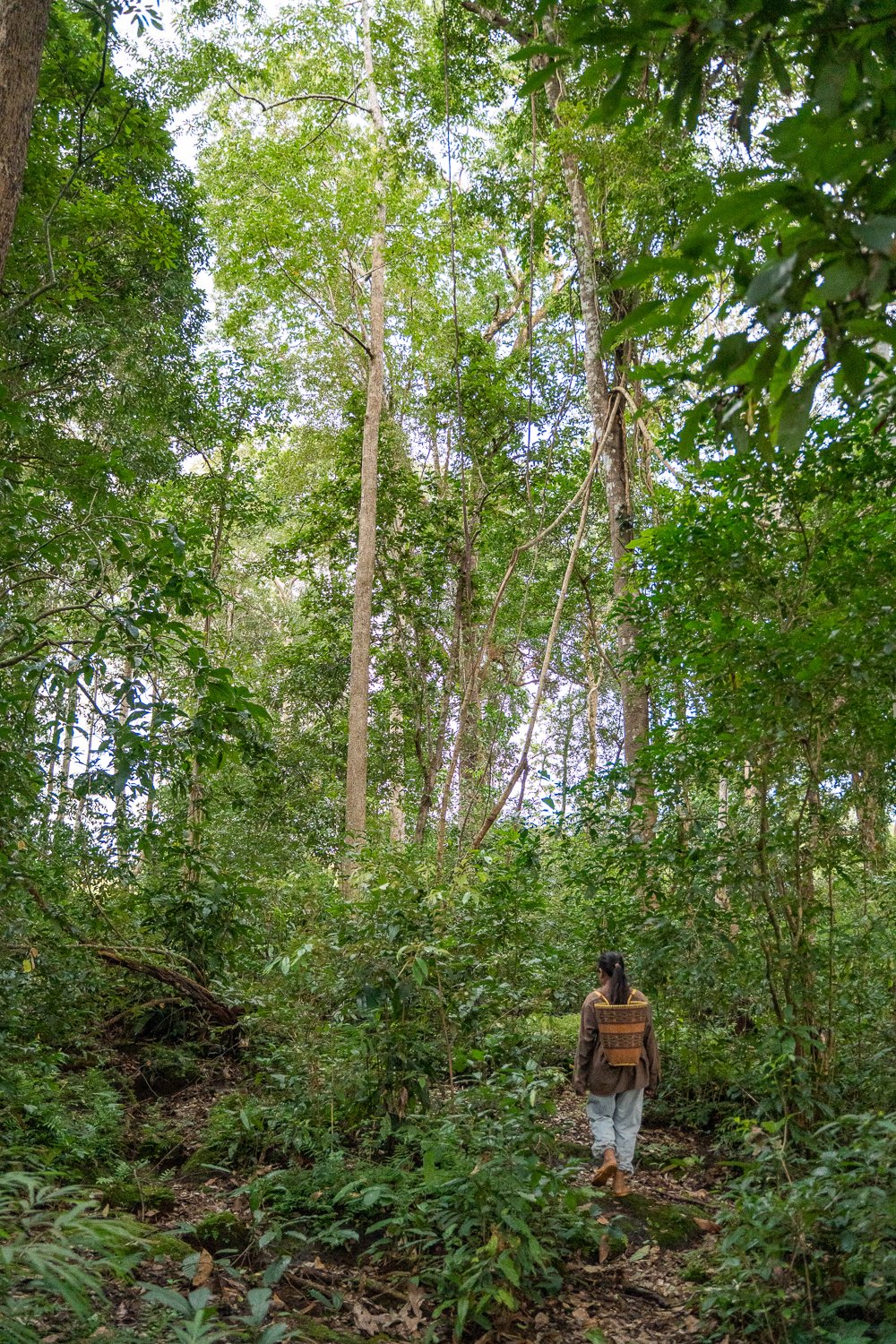
Spending time in the forests of Ratanikiri bought back memories of the extended periods I spent in the forests of Mondulkiri for Last of the Elephant Men.
Then I was working as a director, camera operator and Steadicam operator, this time I’d been assigned as an NGO photographer to document FELM’s mushroom cultivation programme.
FELM, a Finnish NGO, identify partners in the countries they work in and supports them in implementing their projects.
The implementing partner for this one is Integral Cooperation Cambodia, a Phnom Penh based NGO with an office in Banlung.
I arrived at their office to photograph the mushroom cultivation process.
I’m not entirely clear on all the steps, but Nin Samreth, the team leader on the Climate Resilient and Sustainable Indigenous Livelihoods-project, led me through the process while I took photographs of the process and portraits.
Sorl Nhoy, a project officer on the Climate Resilient and Sustainable Indigenous Livelihoods-project, also lent a helping hand. She showed me various parts of the process while I got on with my work as an NGO photographer.
Essentially, they put mushroom culture into sterilised bottles full of straw. The mushrooms then propagate before they can be transported to indigenous communities where they grow them in wall gardens.
After seeing the process at the office, we took a short ride out of town where I photographed Pun Savy at his house where he grows mushrooms.
The visit was rounded off with Pun Sayy taking a basket of mushroom round to his neighbour’s house where they prepared soup.
It’s increasingly important for indigenous people to have alternative food sources as the land they have to farm is getting smaller and climate change is making food production increasingly unpredictable.
You can see other examples of the NGO photography work here.
On Assignment - Photographing Malaria Prevention for WHO, Stung Treng, Cambodia
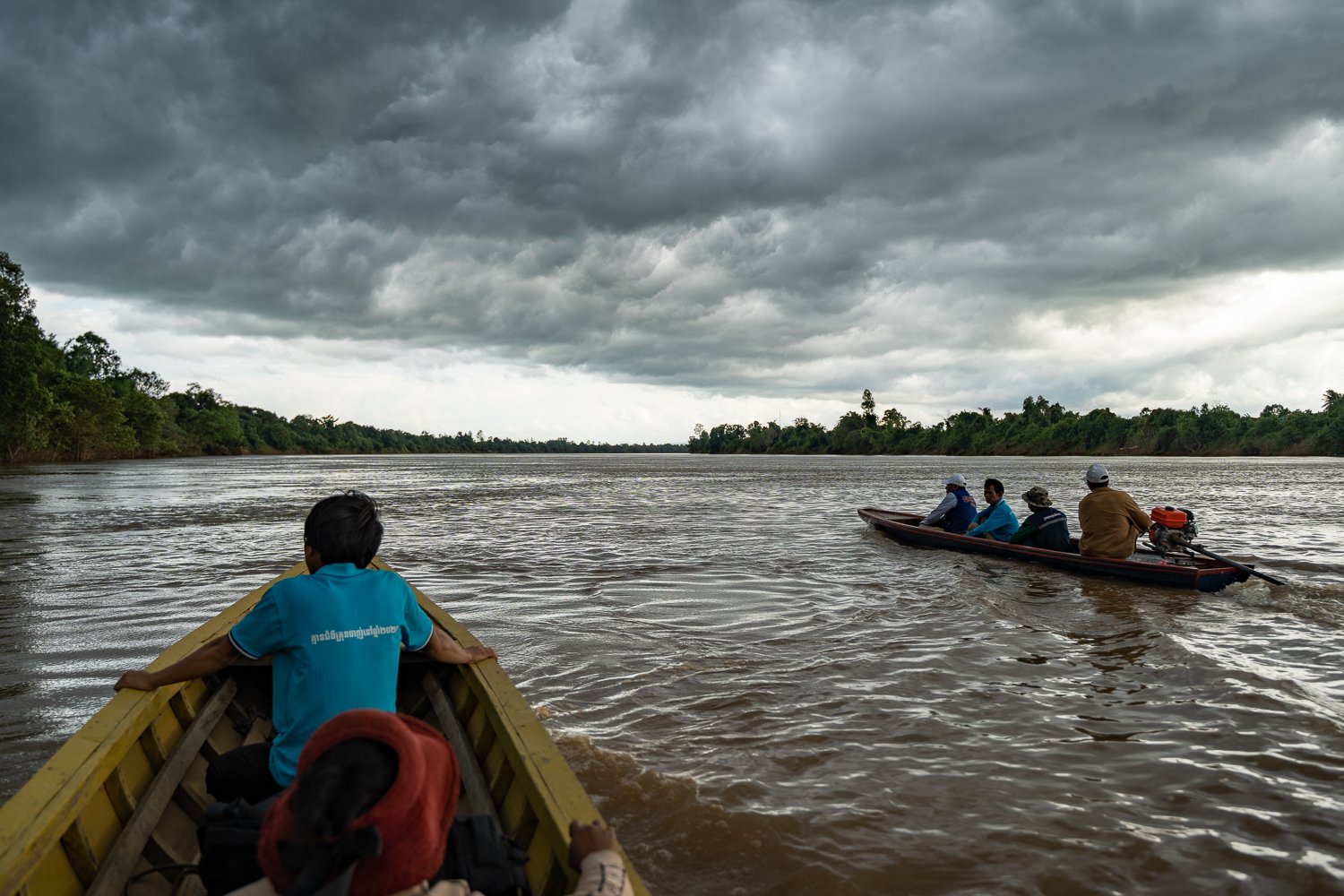
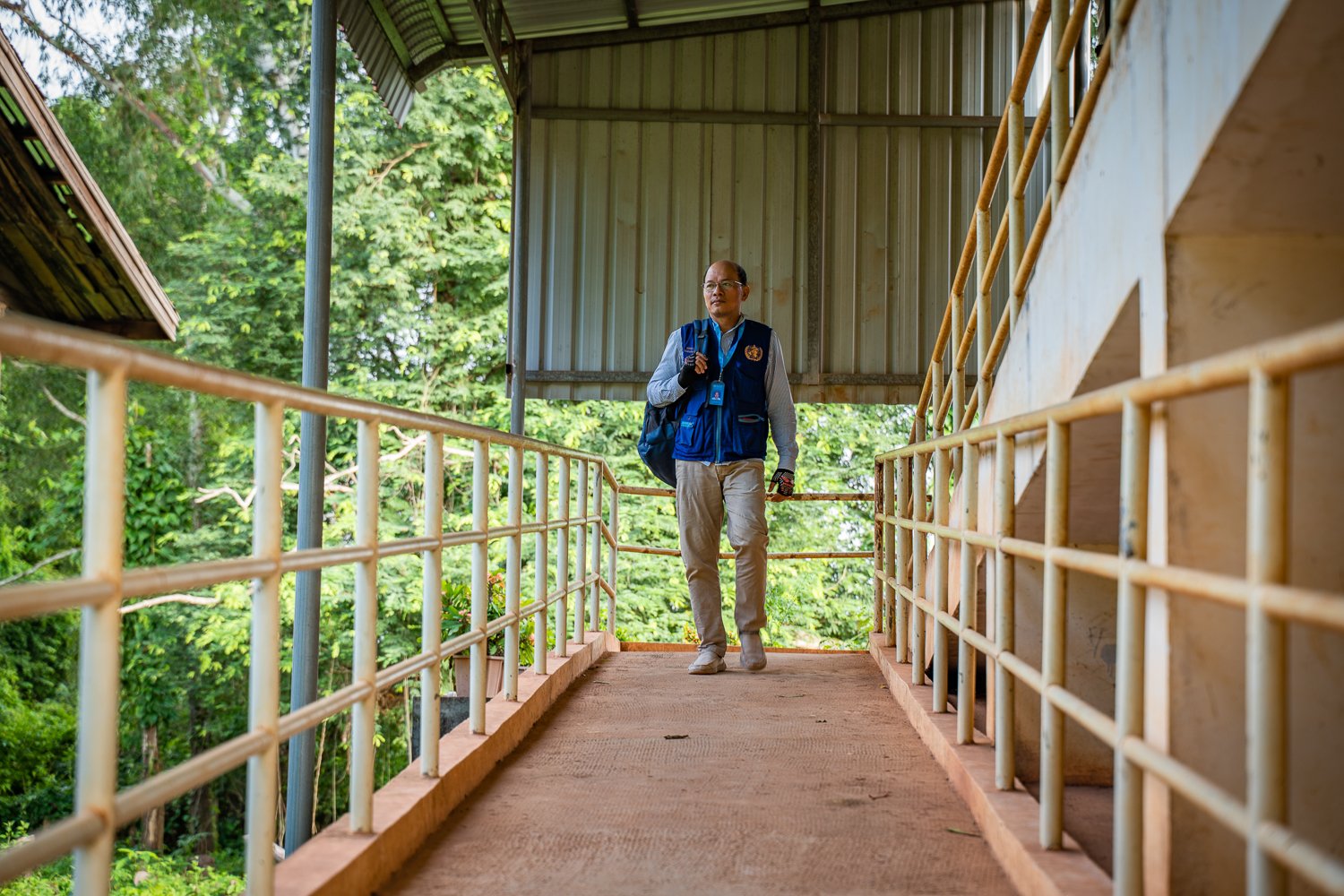


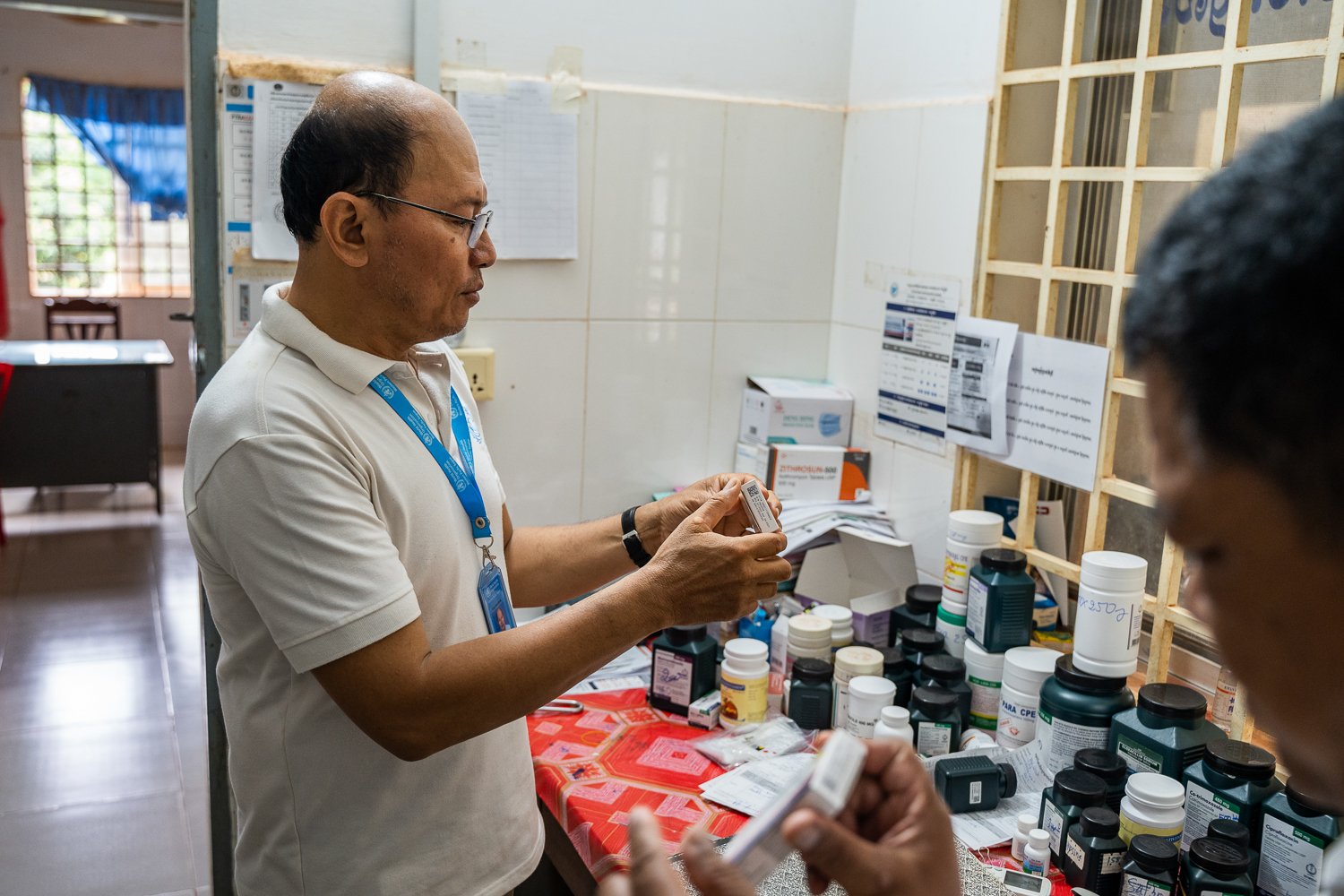
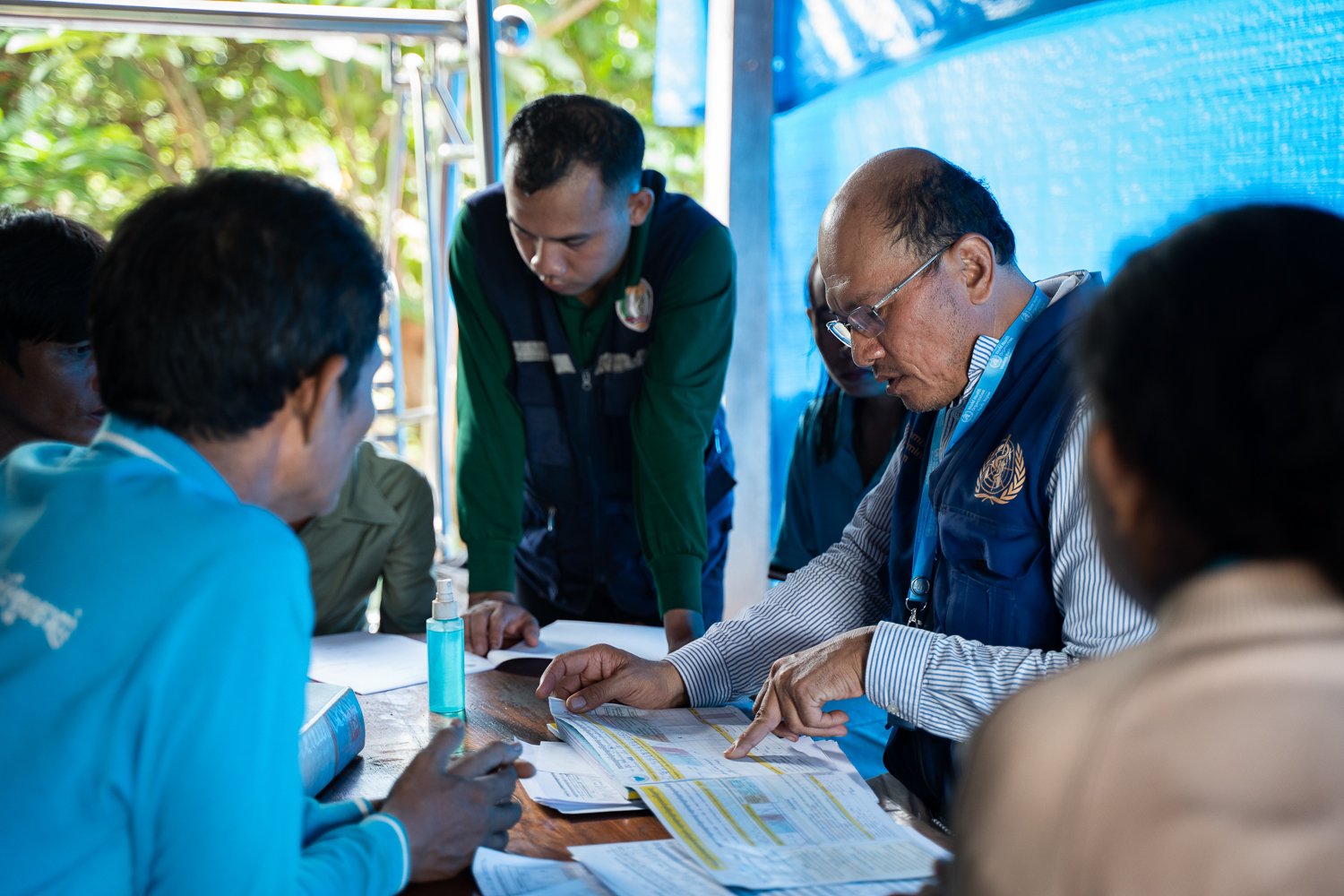
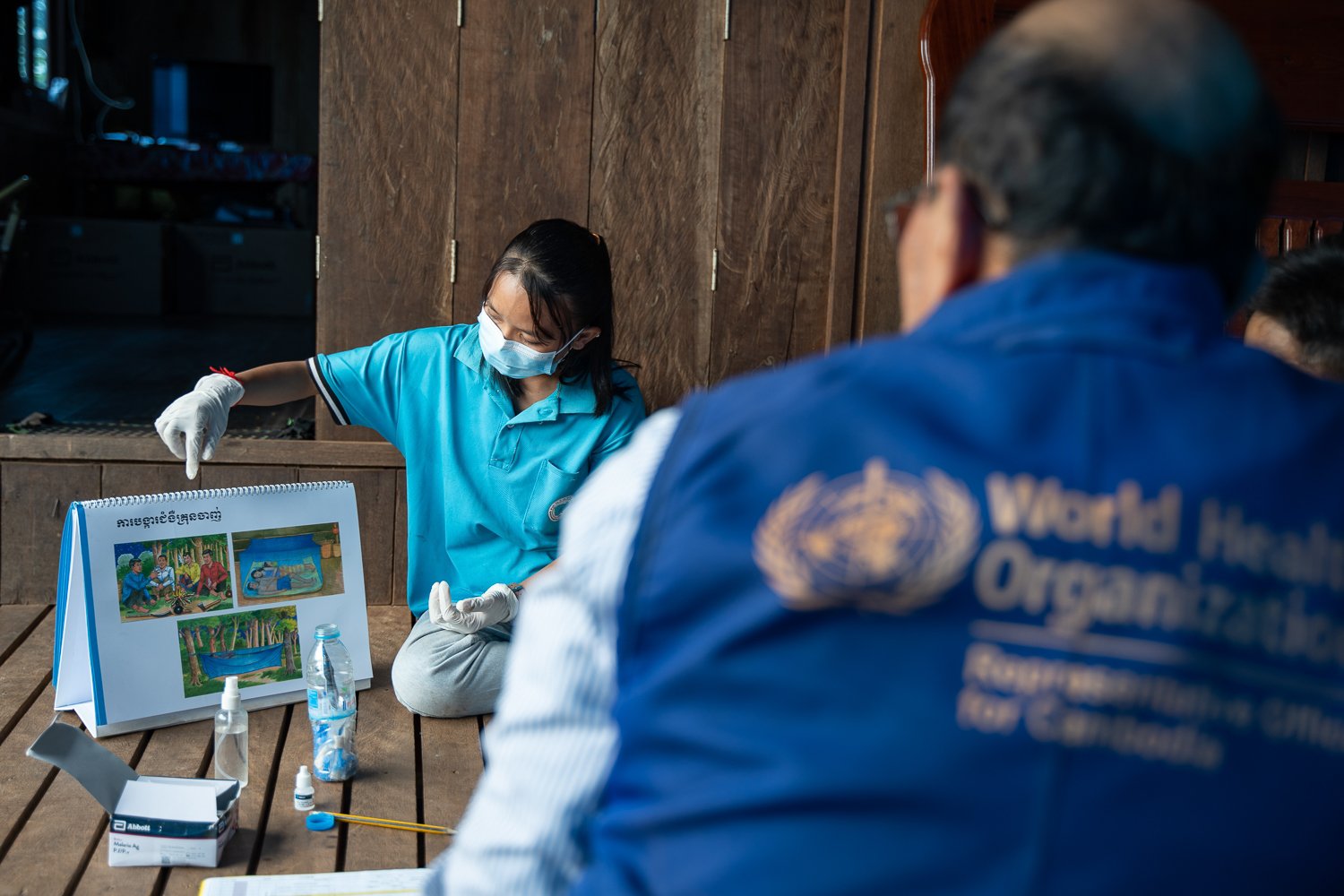

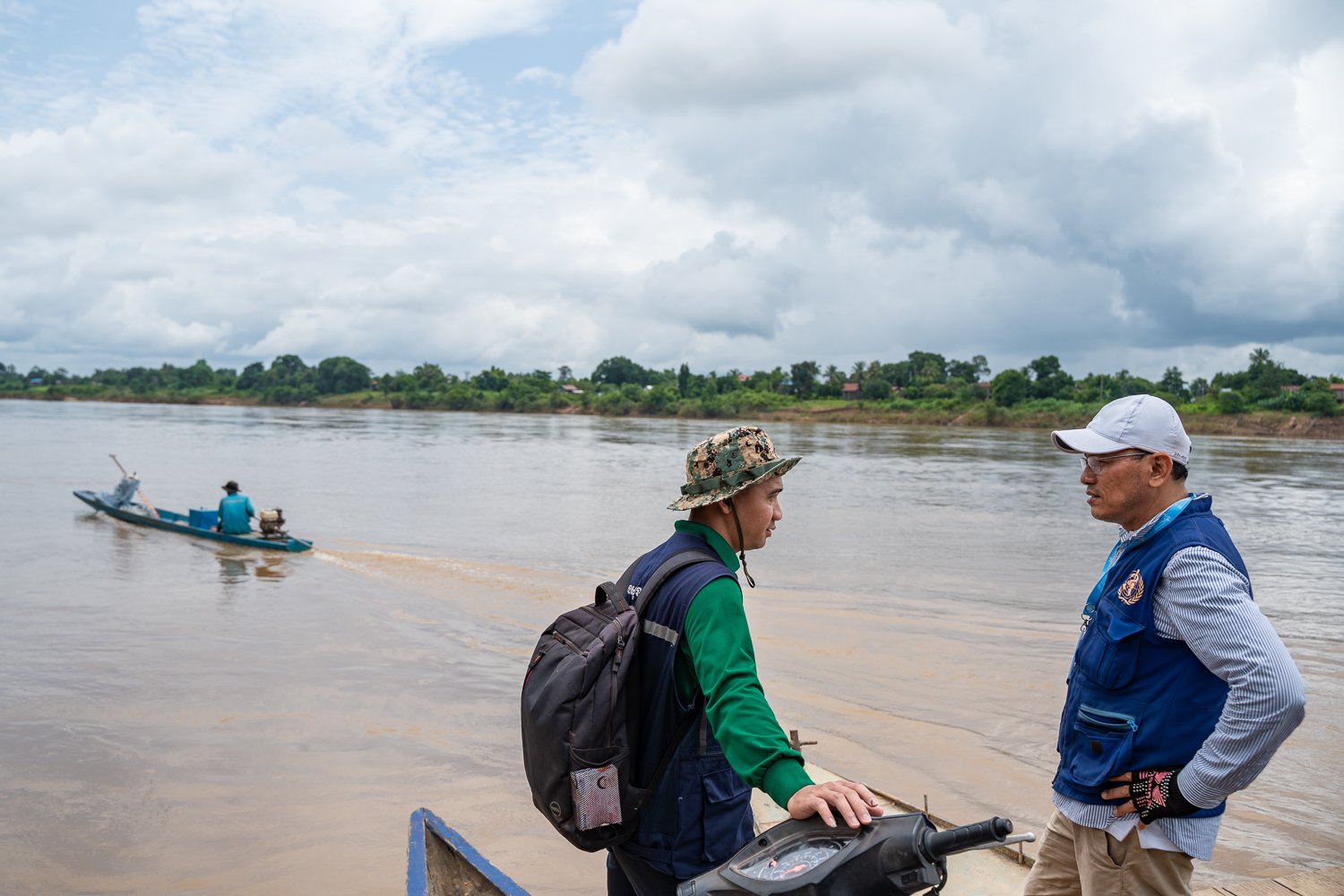
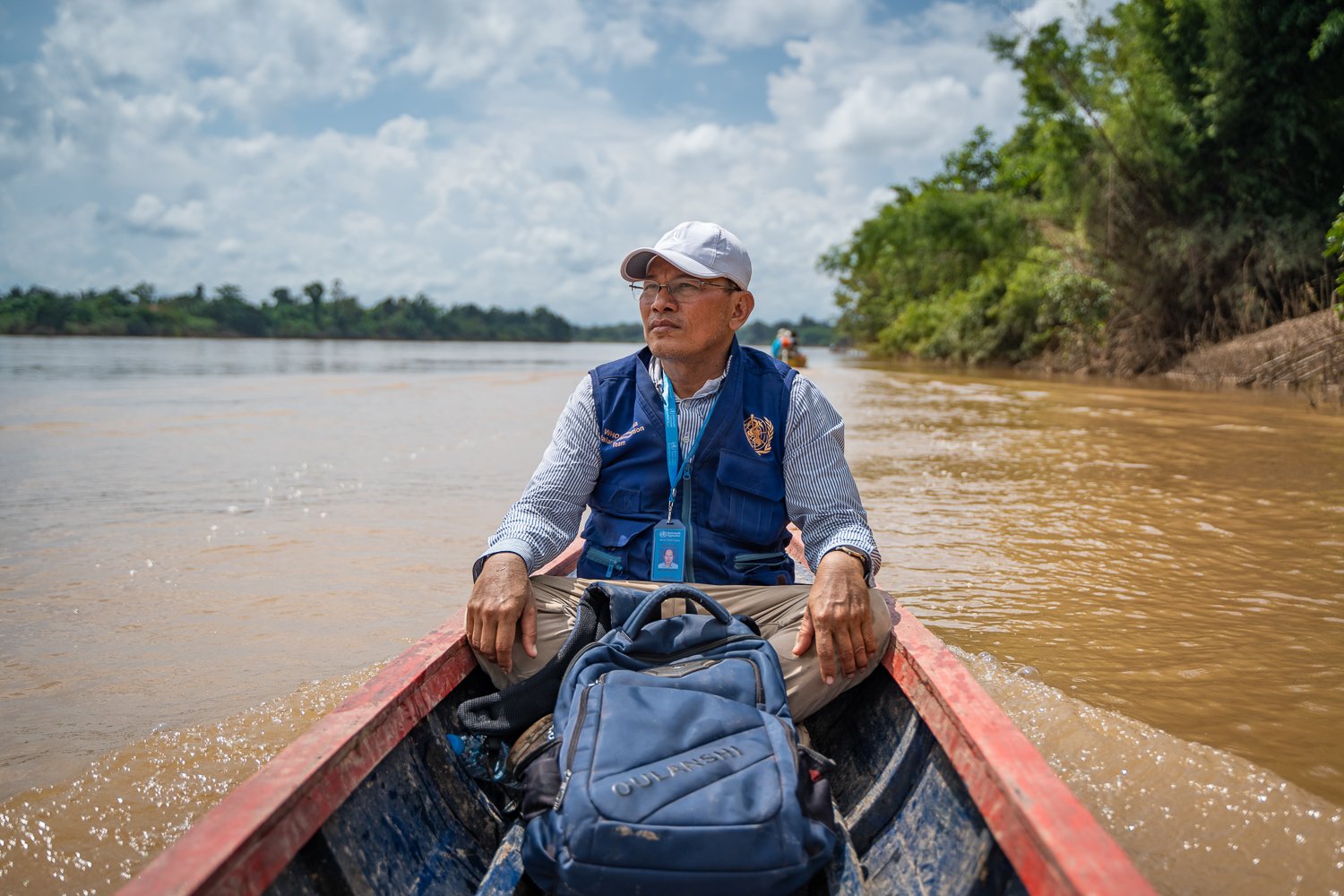

It’s always a pleasure to get of Phnom Penh on assignment and this job was no exception. The brief was to produce a series of 25 photos for the World Health Organization about Sophal for their WHO’s Who series to commemorate their 75th anniversary of providing health for all.
The series was to highlight some of vital work done by some of the key healtcare workers around the world.
Sophal works in malaria prevention and has dedicated himself to preventing malaria in the remote parts of Stung Treng, which are high risk areas.
Sophal was a great choice for the photography series and he is dedicated to his work and he’s very respected within the communities he works in. He led a fundraising campaign when one of his team lost their house through fire. On another occasion, he donated blood to one of his community health workers’ wives after being alerted to the need in the middle of the night.
He’s also studying for a masters in public health in his spare time.
It was a busy day photographing Sophal. We arrived at Siem Pang Health Center early in the morning where Sophal met with the local health centre workers, checked malaria records and did a stock take of the preventative medicine before travelling into the community.
Working in remote villages, we had to take a ferry an ox and cart and small boat to reach the most remote village.
When we got to the community, Sophal checked the records and spoke to his team of community health workers.
From there, his team went into the community to provide training to the village and to check on people who had recently returned from the forest to give them preventative medicine.
The team managed to get all of this done before a storm blew in and the heavens opened.
You can see other examples of my NGO photography for the World Health Organization here and here.
Portrait photography of Him Sophy at his Conservatory of Music in Phnom Penh









It’s not every day you get an email from a libretto asking you for your services as a documentary filmmaker, but this is one of the upsides of making documentaries in Cambodia.
Catherine Filloux, a playwright and librettist, had seen my work on Last of the Elephant Men and she got in touch to discuss the potential of collaborating on a documentary.
She’d written the words to Where Elephants Weep, a rock opera set in Cambodia and along with Him Sophy, who wrote the music, they were looking to reprise the opera after it was banned in Cambodia only a couple of performances its run in Phnom Penh.
It was great speaking to Catherine, an award-winning playwright, librettist and human rights activist who has written plays in conflict zones across the world and believes in the power of theatre as a tool for peace.
It was also a privilege to meet Him Sophy, an internationally acclaimed Cambodian classical musician and composer, at the music school he has established in Phnom Penh to train the next generation of Cambodian musicians. Sothy wrote Bangsokol: A Requiem for Cambodia. The process of writing the music involved reviving traditional Khmer instruments depicted on the wall carvings at Angkor Wat.
Unfortunately, due to scheduling conflicts and uncertainty about the production the documentary never got off the ground, but it was fascinating researching Khmer theatrical and musical traditions. It’s definitely an area I would like to explore more in future documentaries.
You can see more examples of my photography work here and here.
Drone photography and videography for Steff Gruber | Aerial Visuals in Phnom Penh

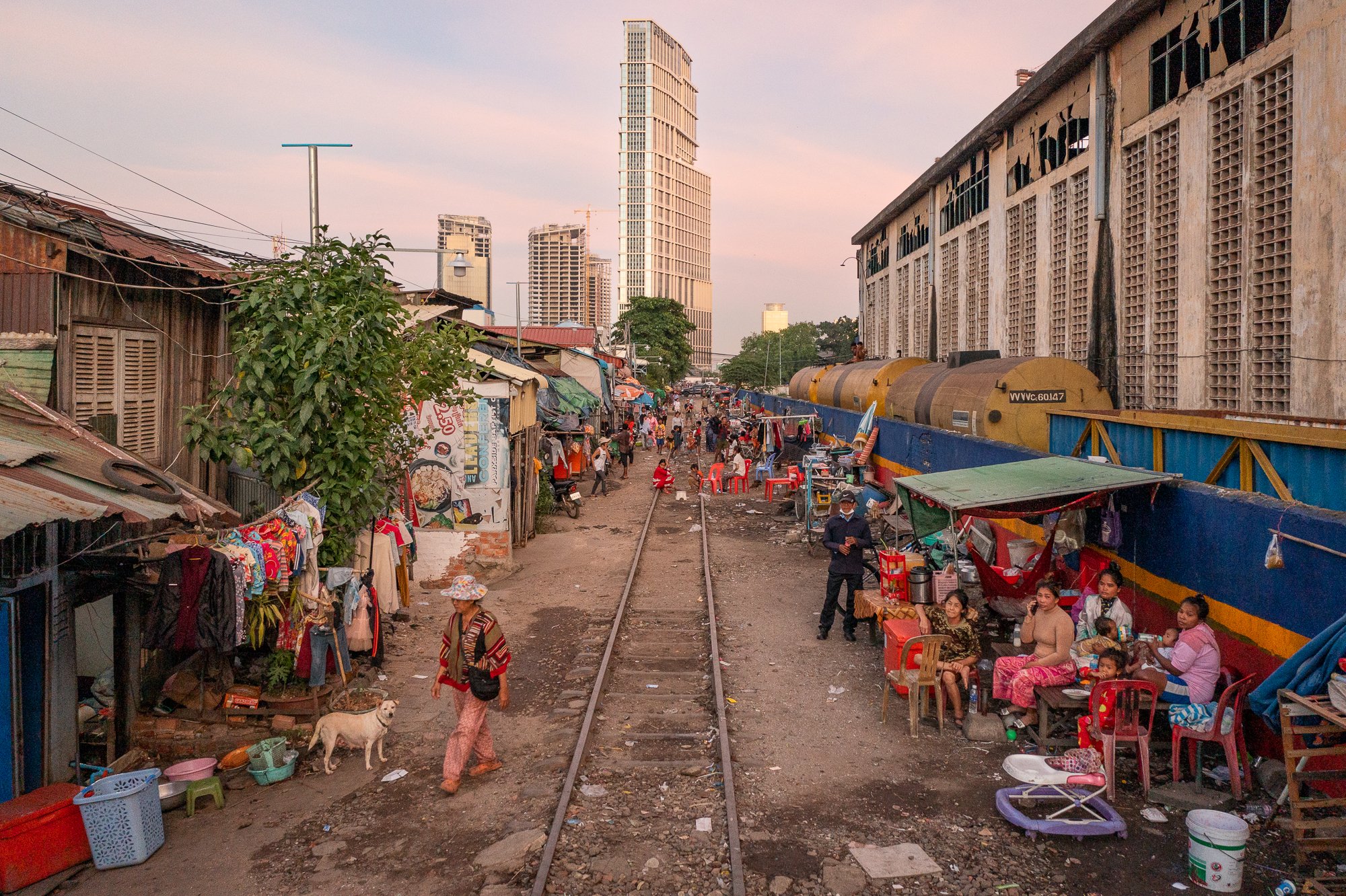
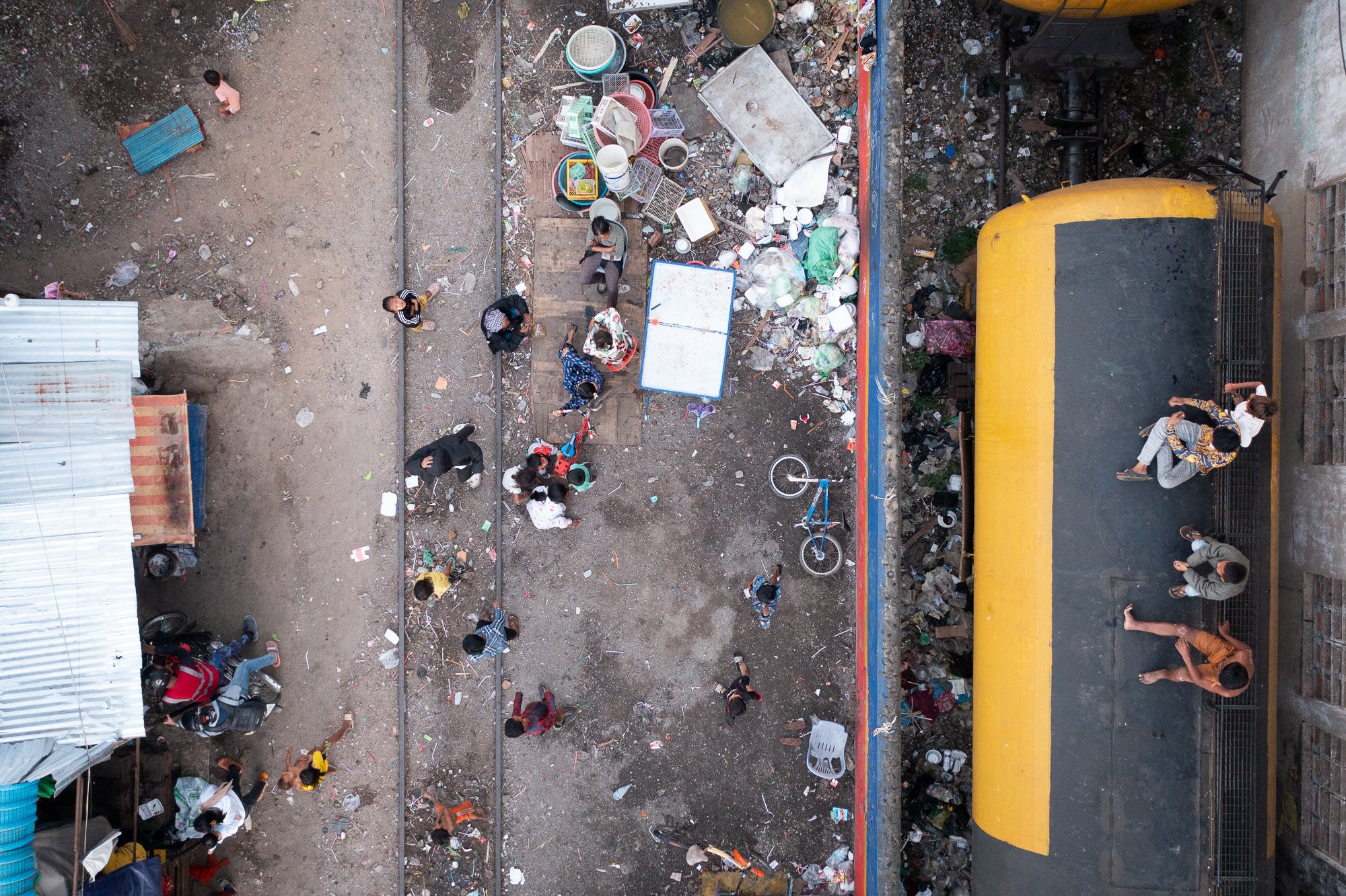
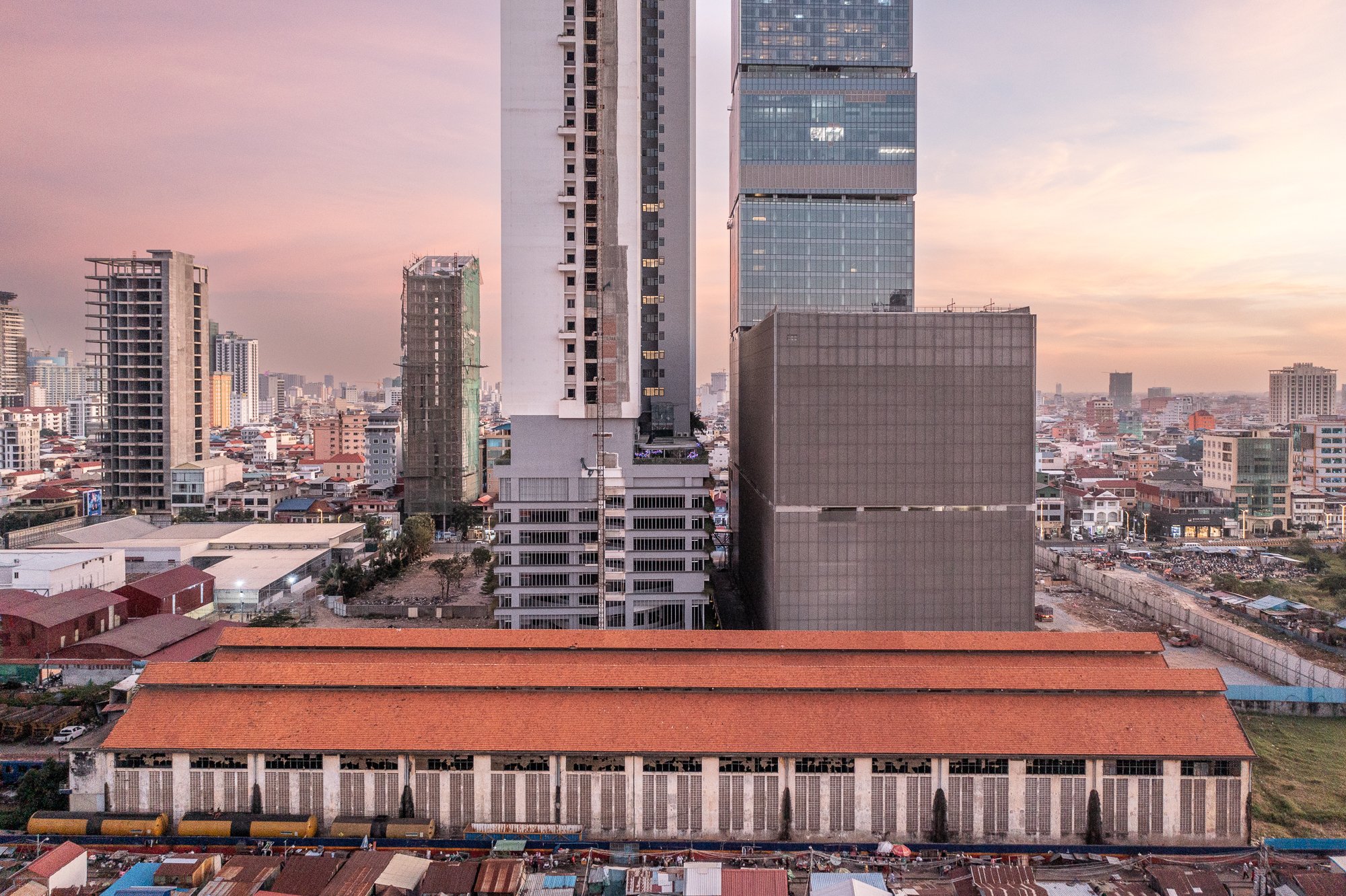
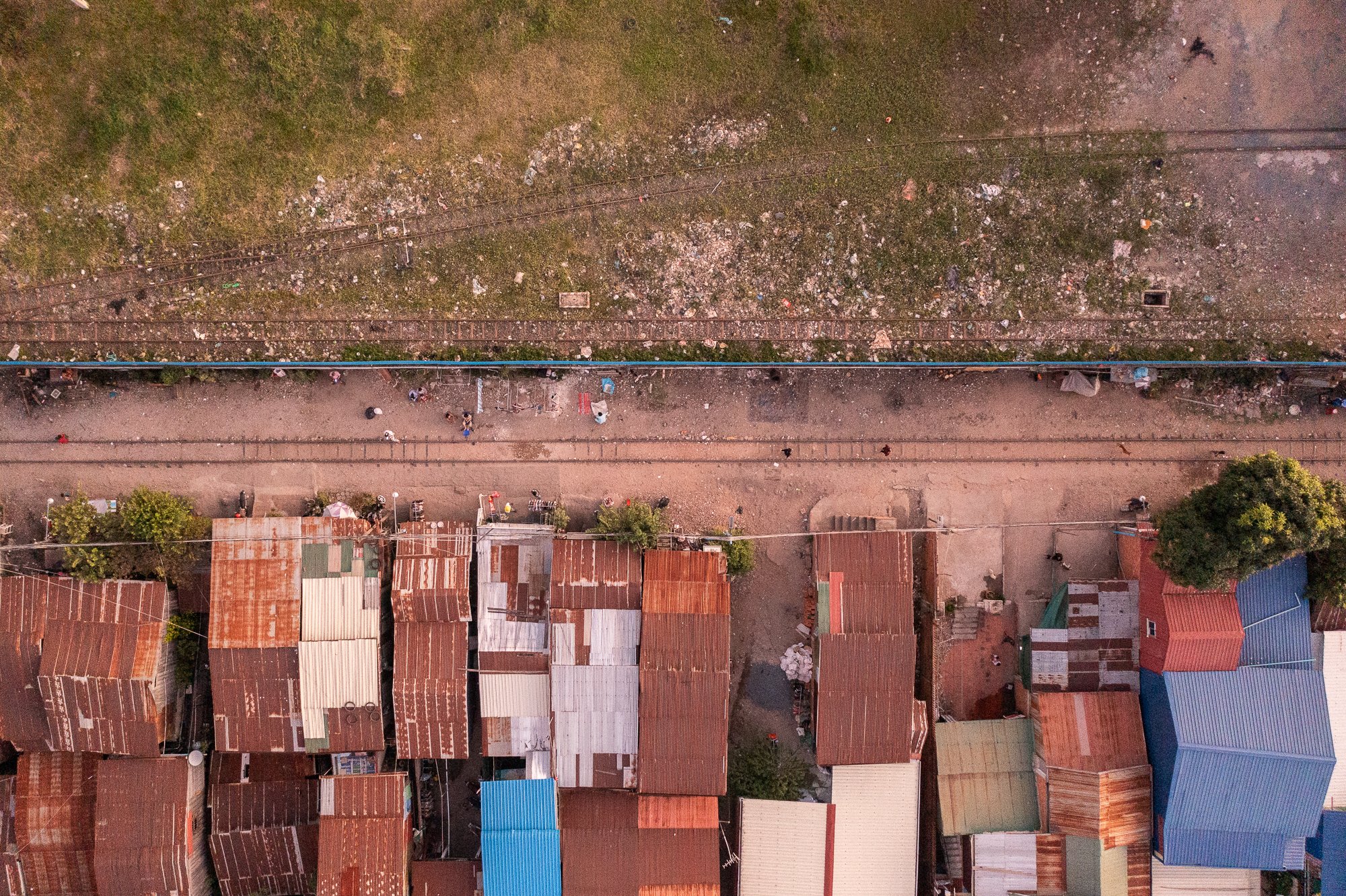
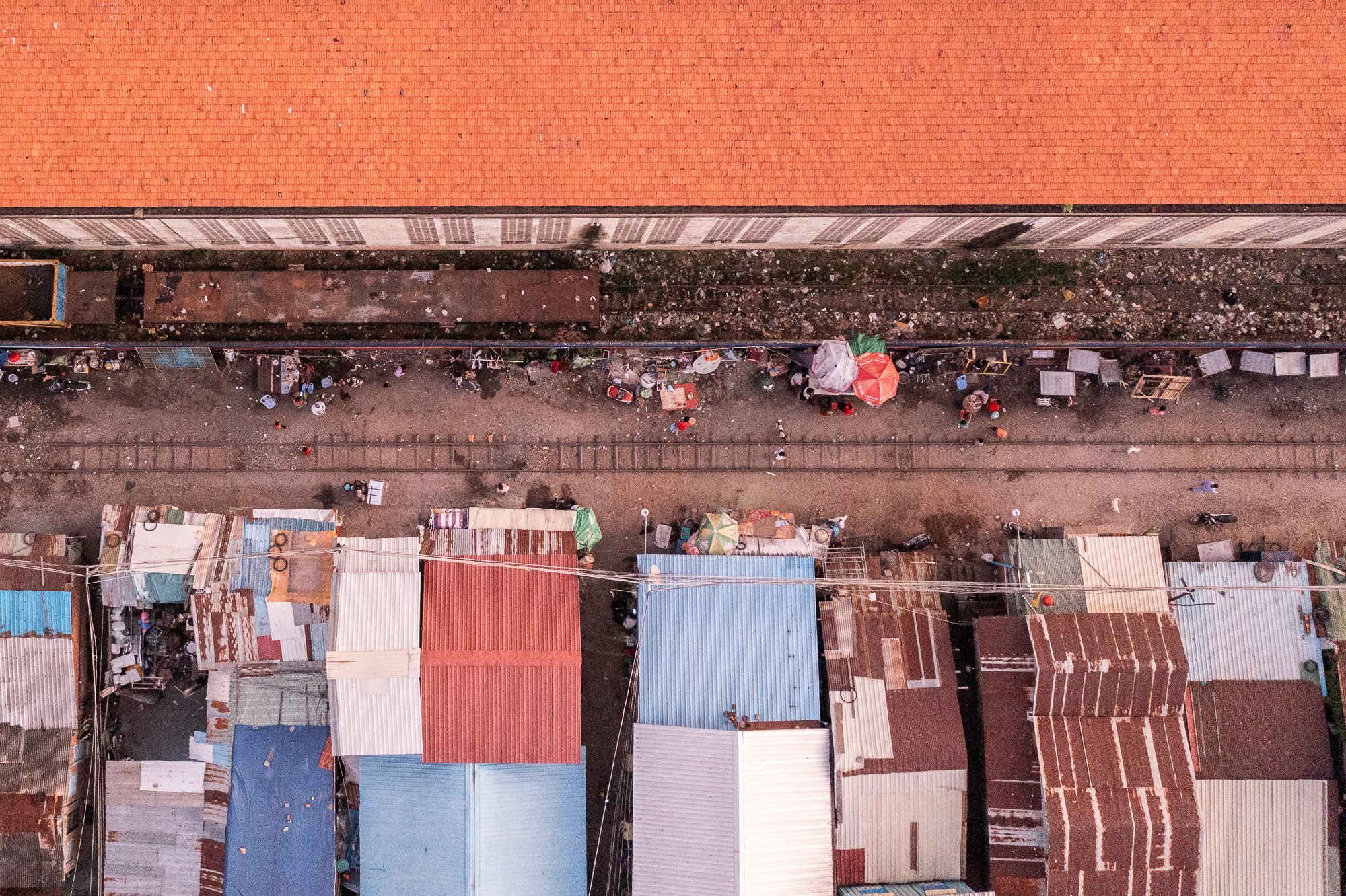
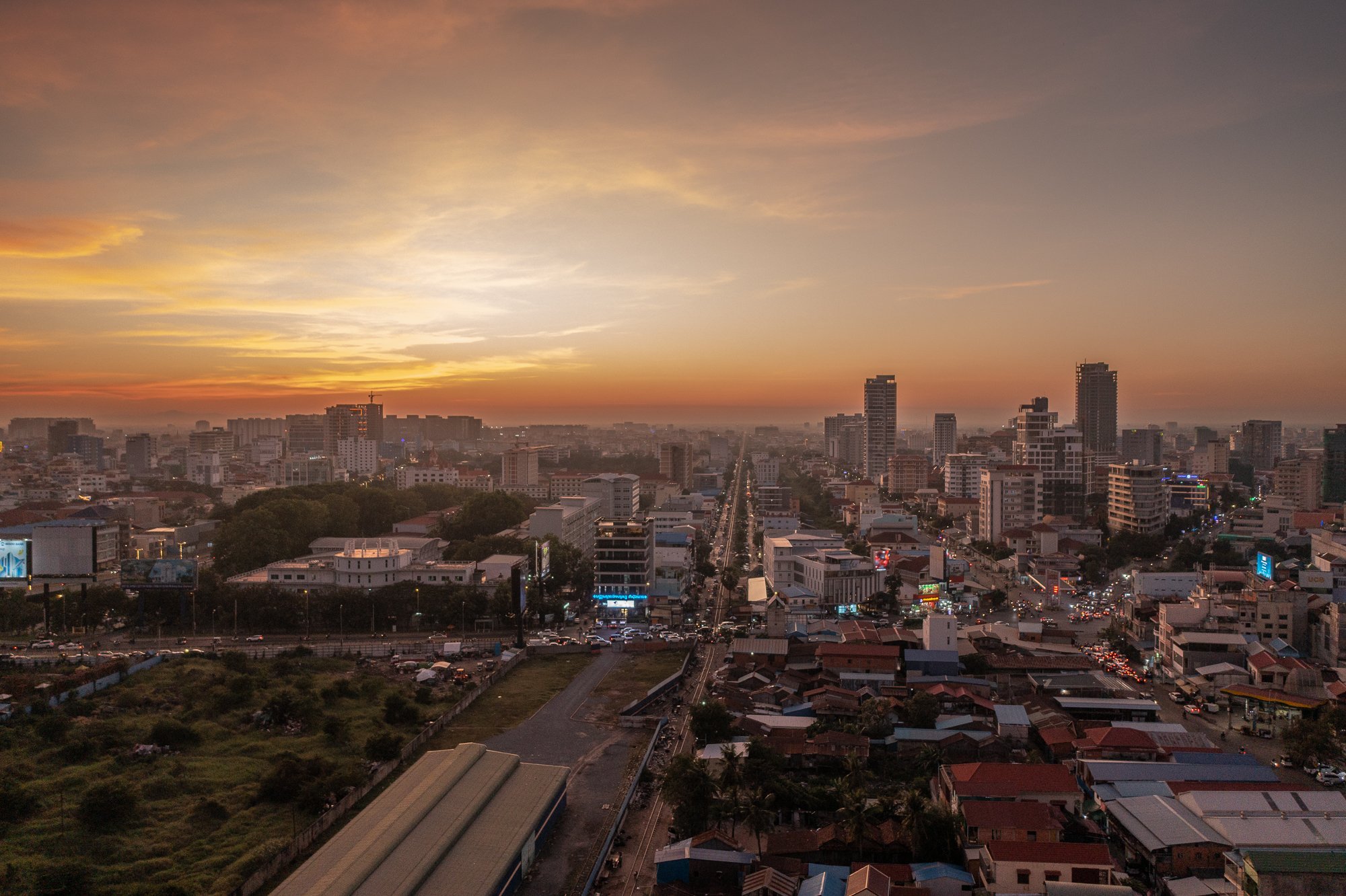
Steff got in touch with me to provide drone photography and videography services for a long-term photographic project he’s working on about the community that live on the railway tracks behind the station in Phnom Penh.
He was trying to get permission to film from one of the trains to give the perspective from a train passing through the community. This proved too complicated and he came up with the idea to photograph and take videos of the area with a drone to complete the project before he flew back Switzerland the following day.
Steff has been visiting the area for several years doing a study on the area that is right in the centre of Phnom Penh but remains massively underdeveloped. While slightly daunting for Steff and I and the team, locals barely battered an eye-lid as trains passed centimeters from them.
Steff plans to host an exhibition of his photos and my drone shots in the coming months. He aslo got me to shoot some drone videography to be used on the website for the exhibition and who knows, maybe a couple of the clips may feature in the exhibition itself.
It was great to work alongside Steff and listen to advice from an accomplished filmmaker and photograper. It also good to see someone working on a long-term project that has spanned several years in a world that is increasingly becoming more instantaneous and disposable.
You can see more of my drone photography work here and other examples of my drone videography work here.
I look forward to sharing more information about the exhibition he’s planning.

